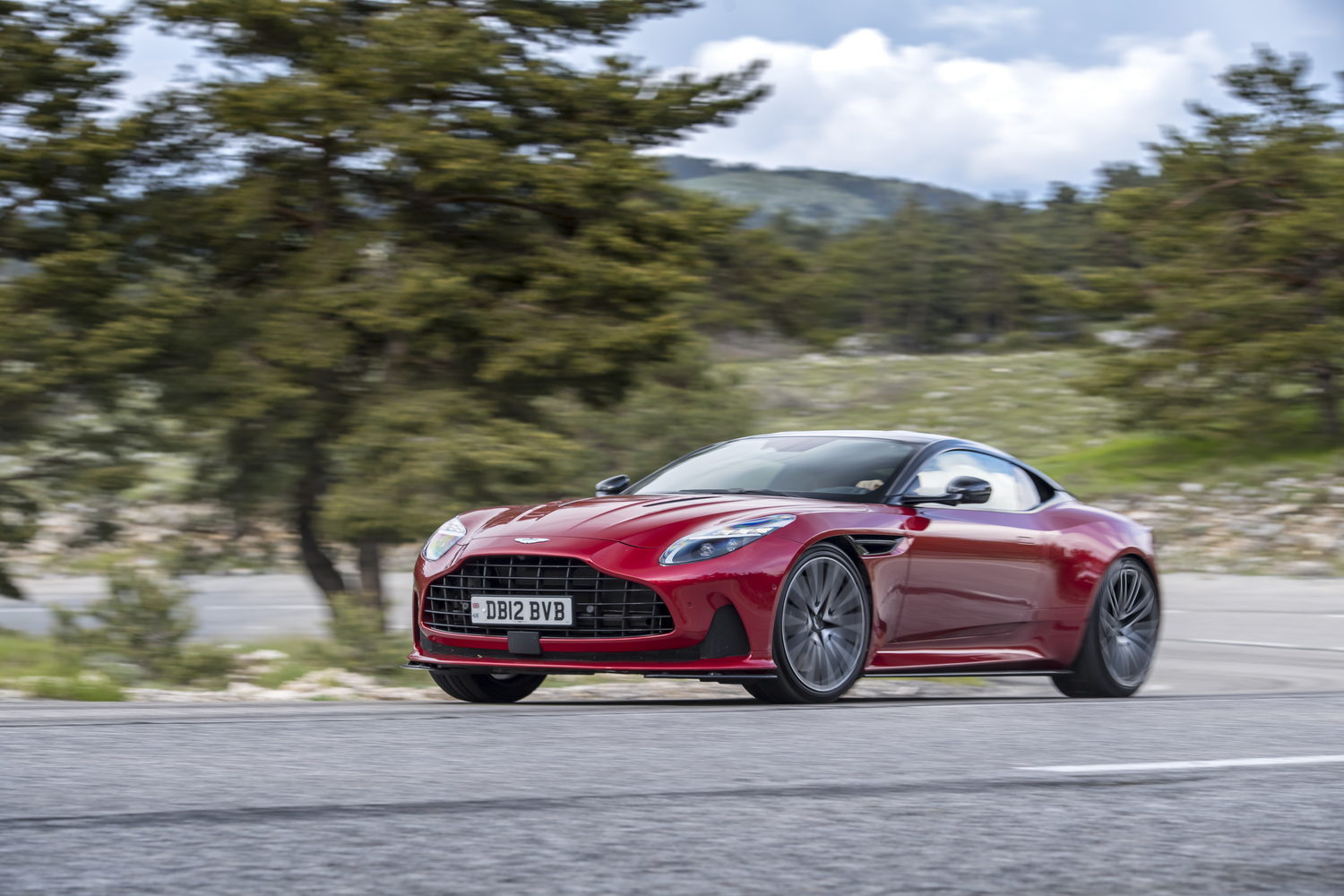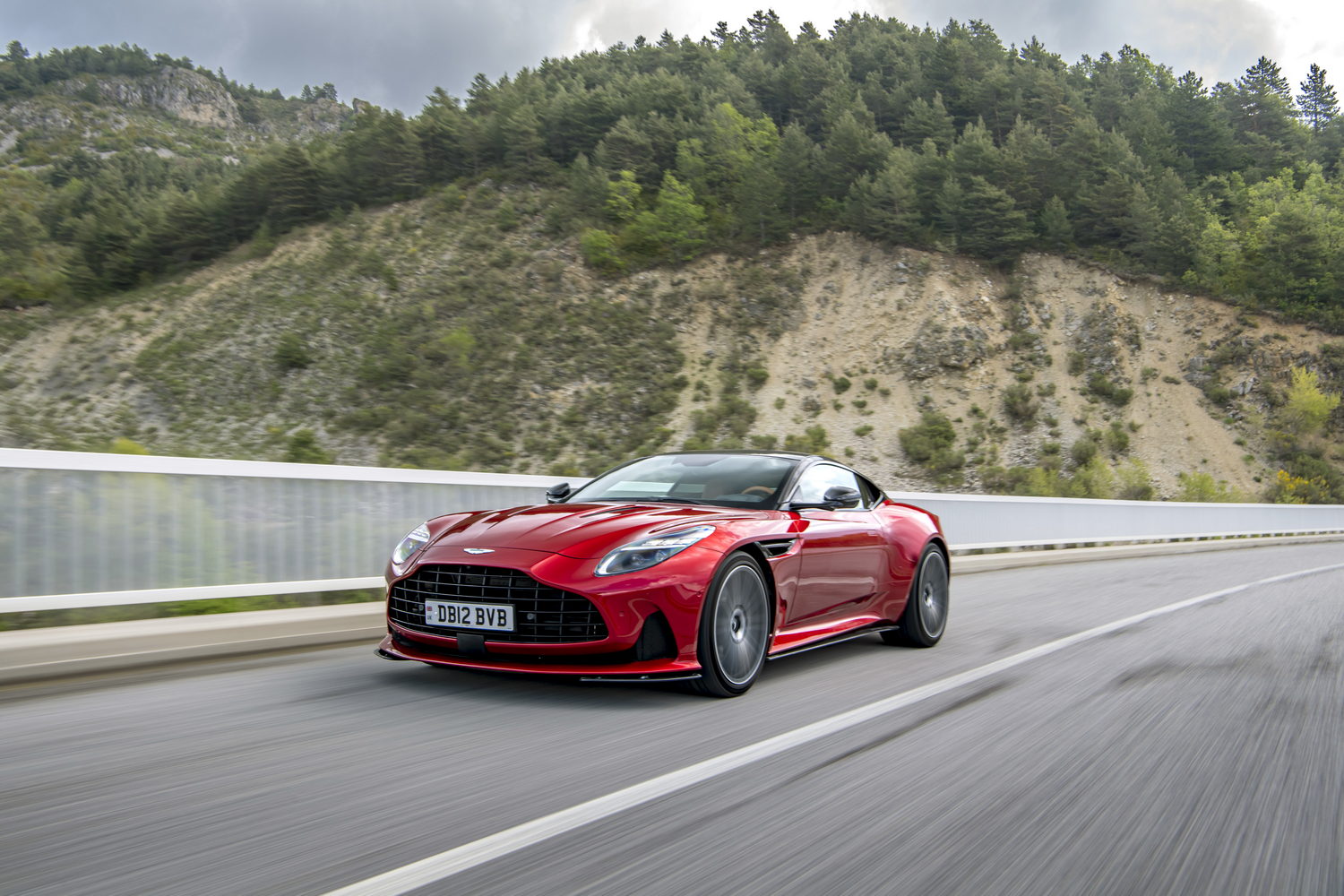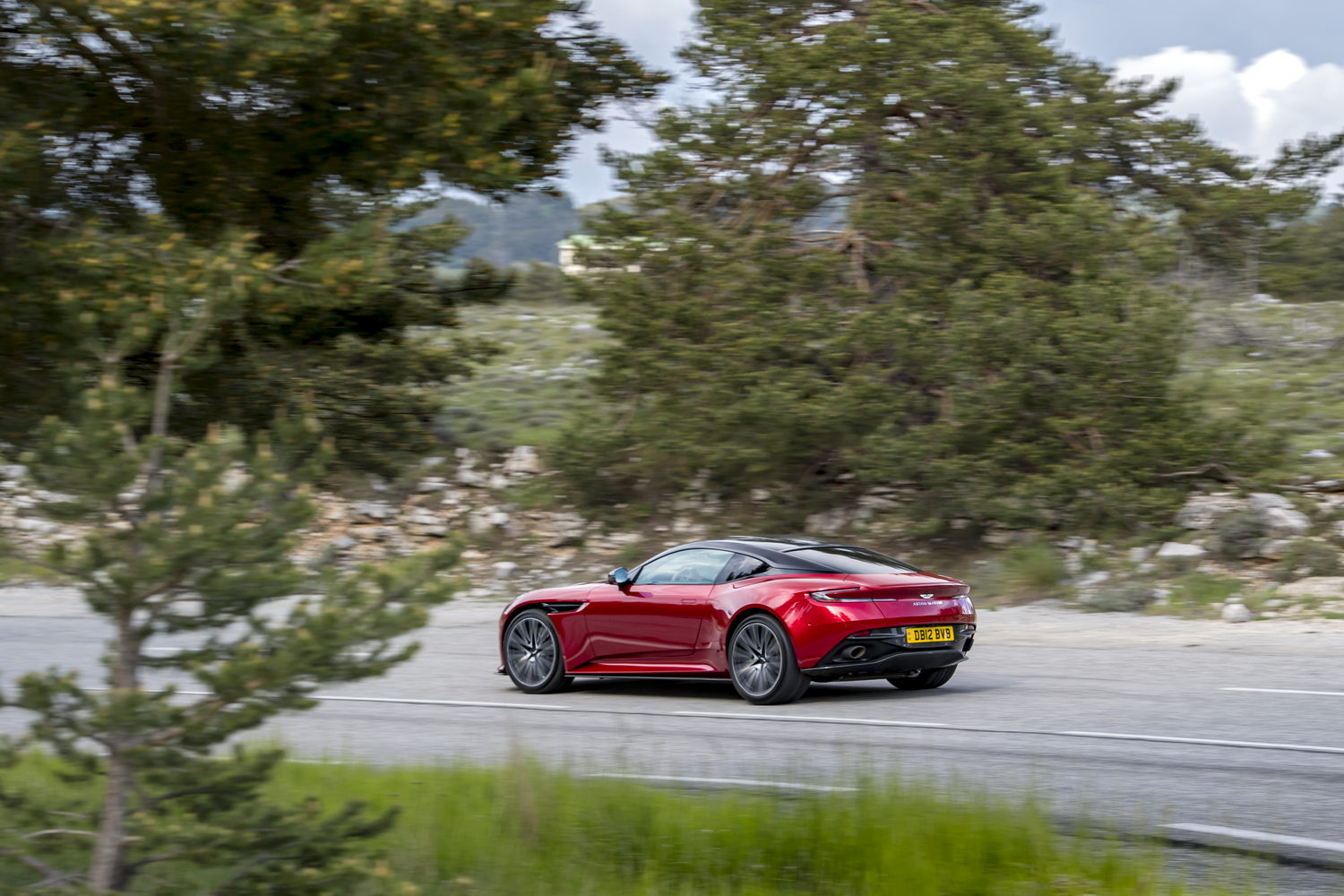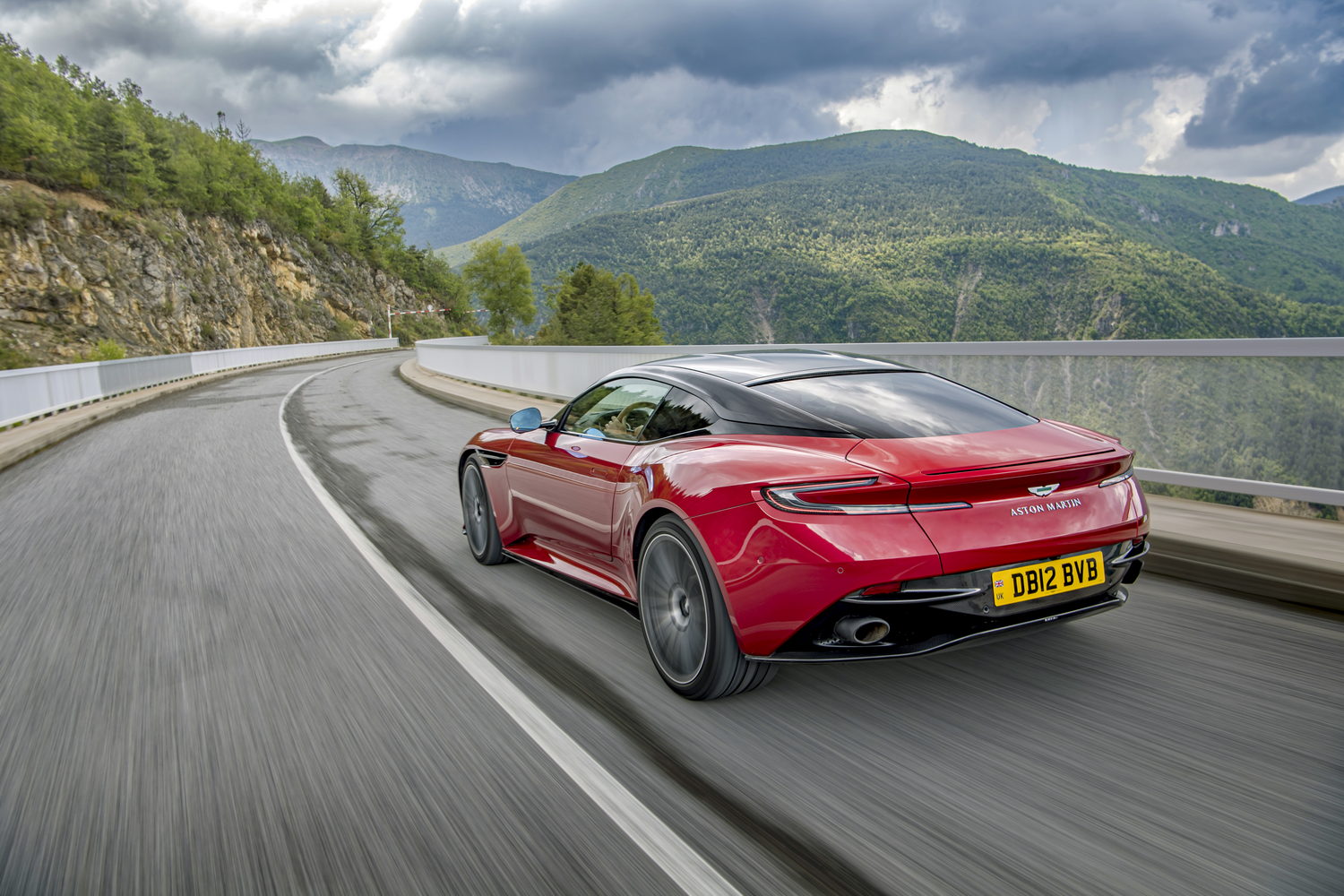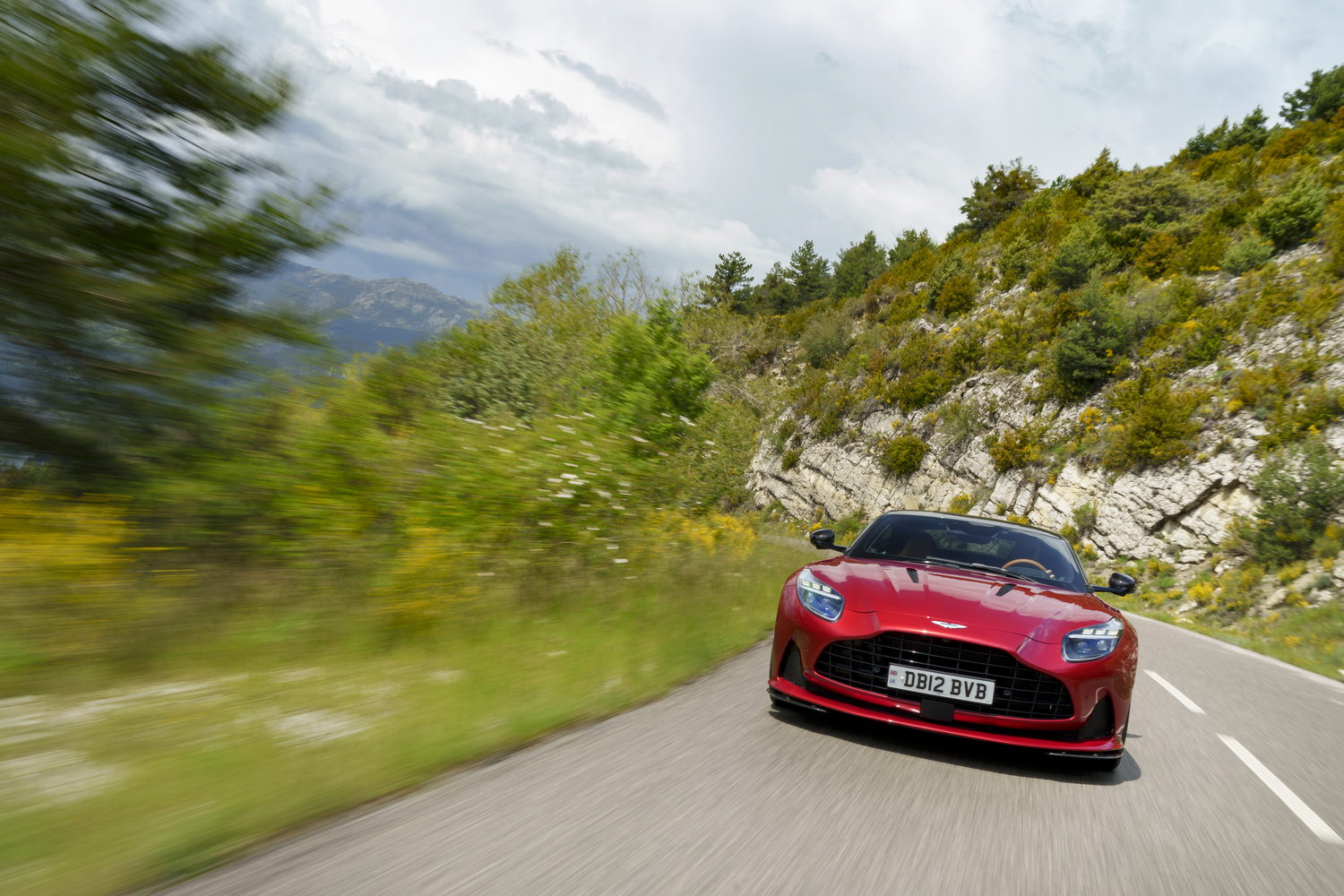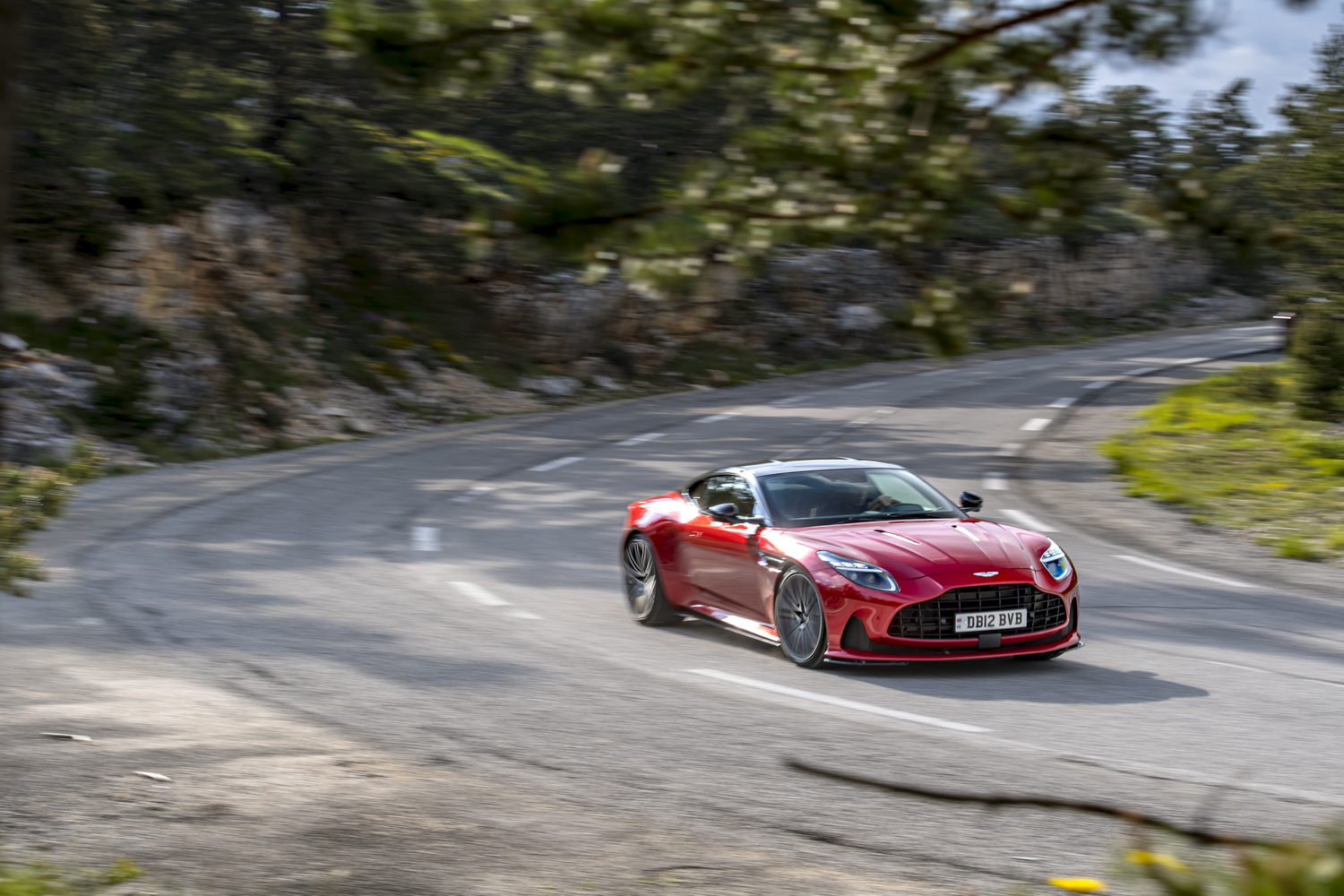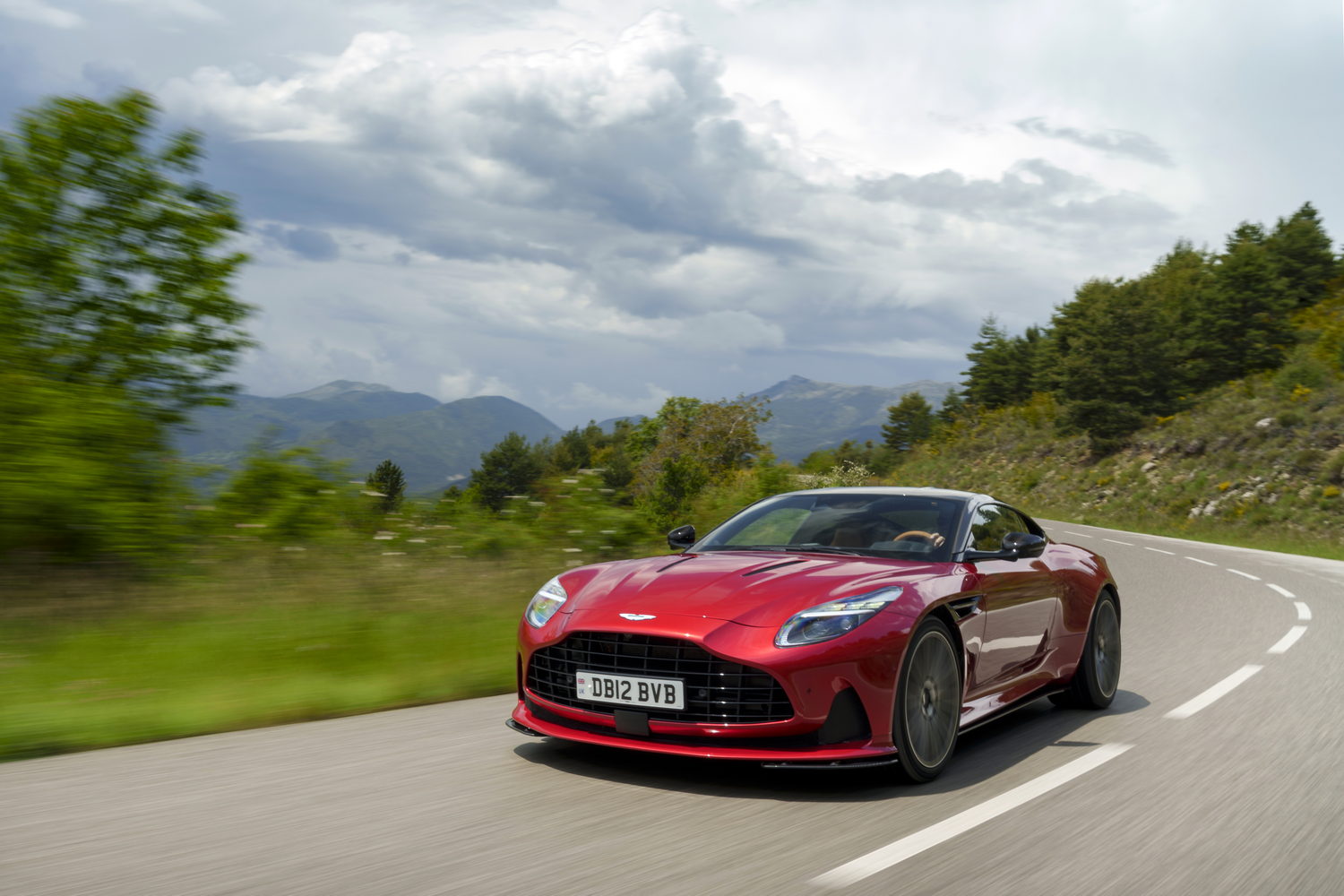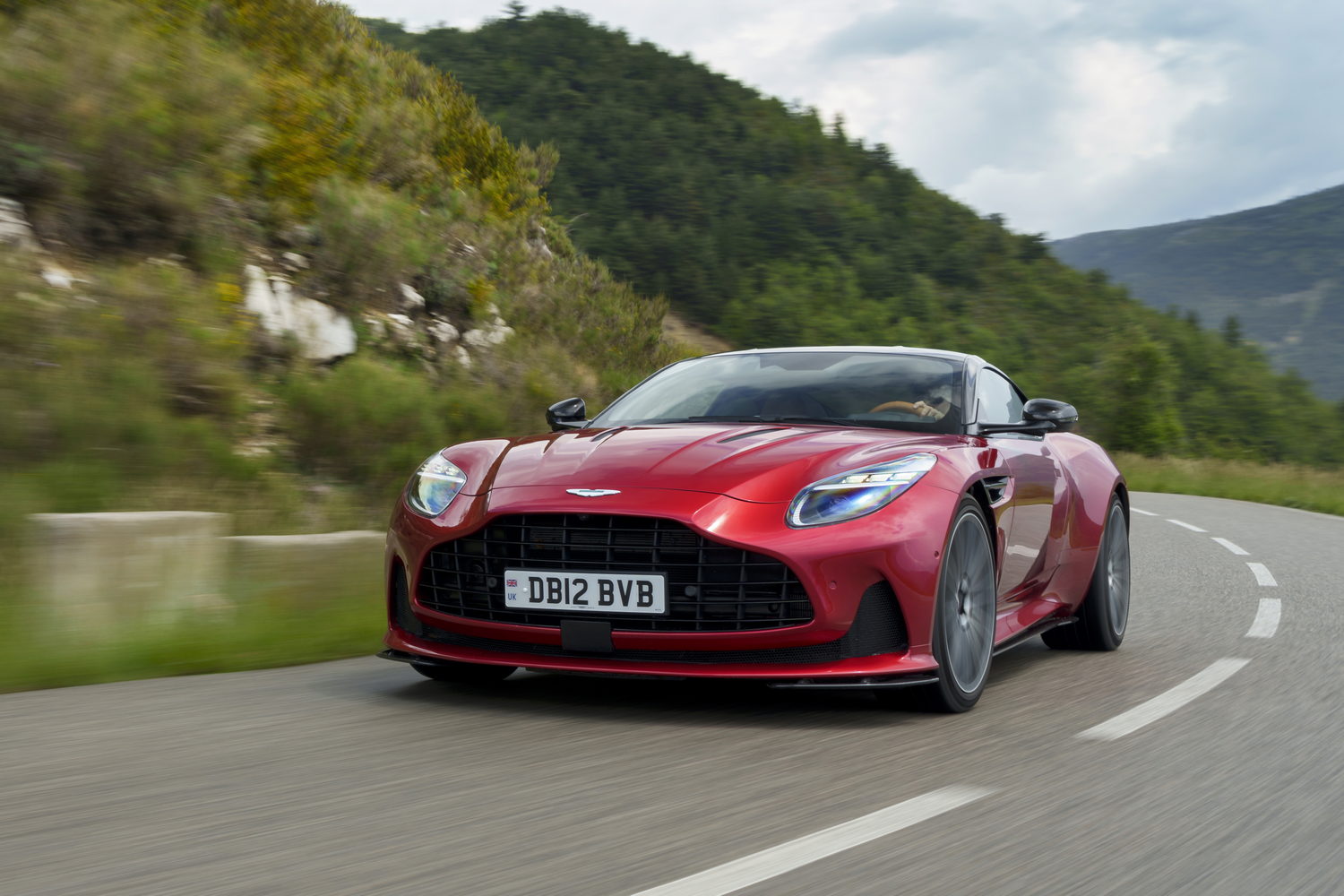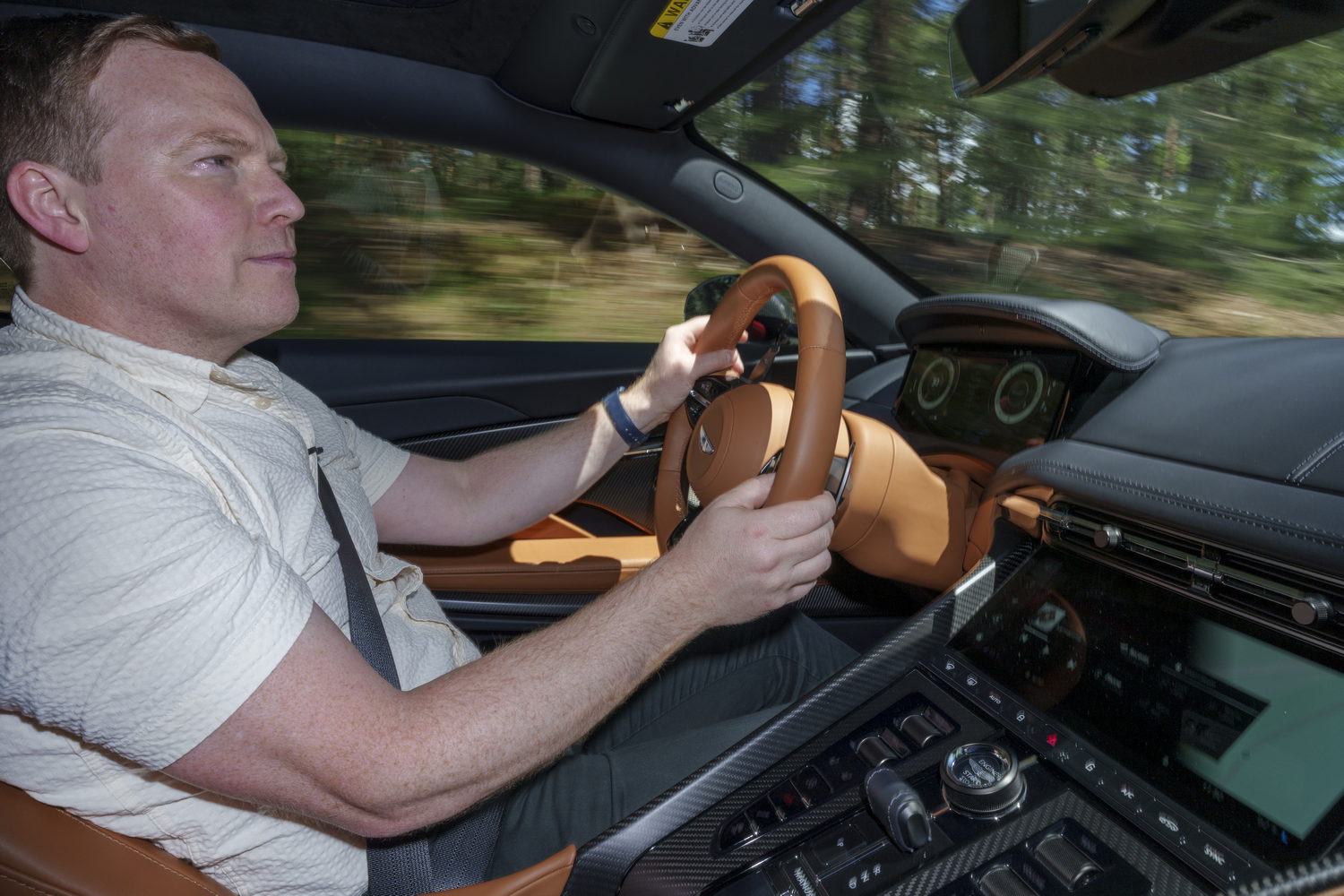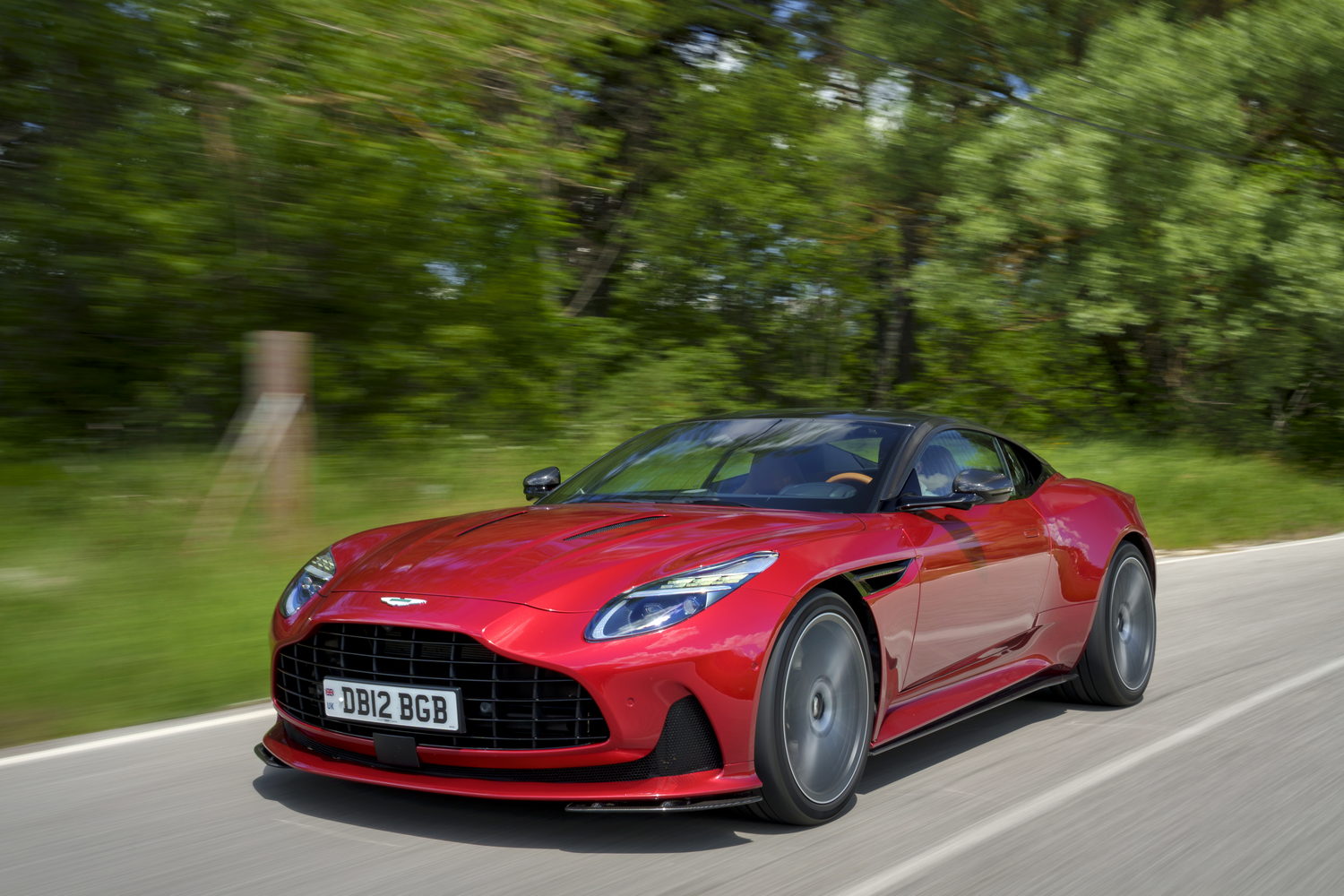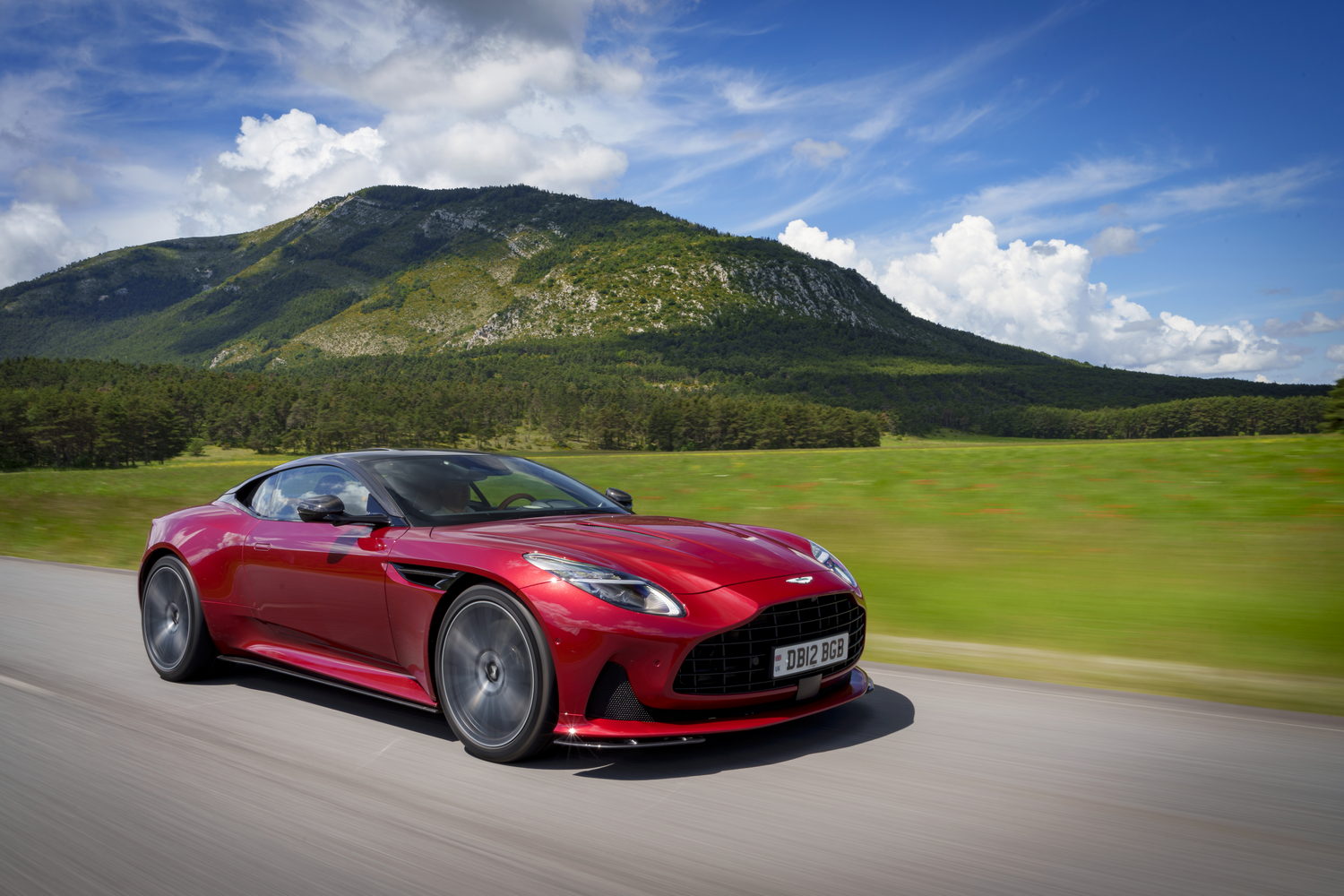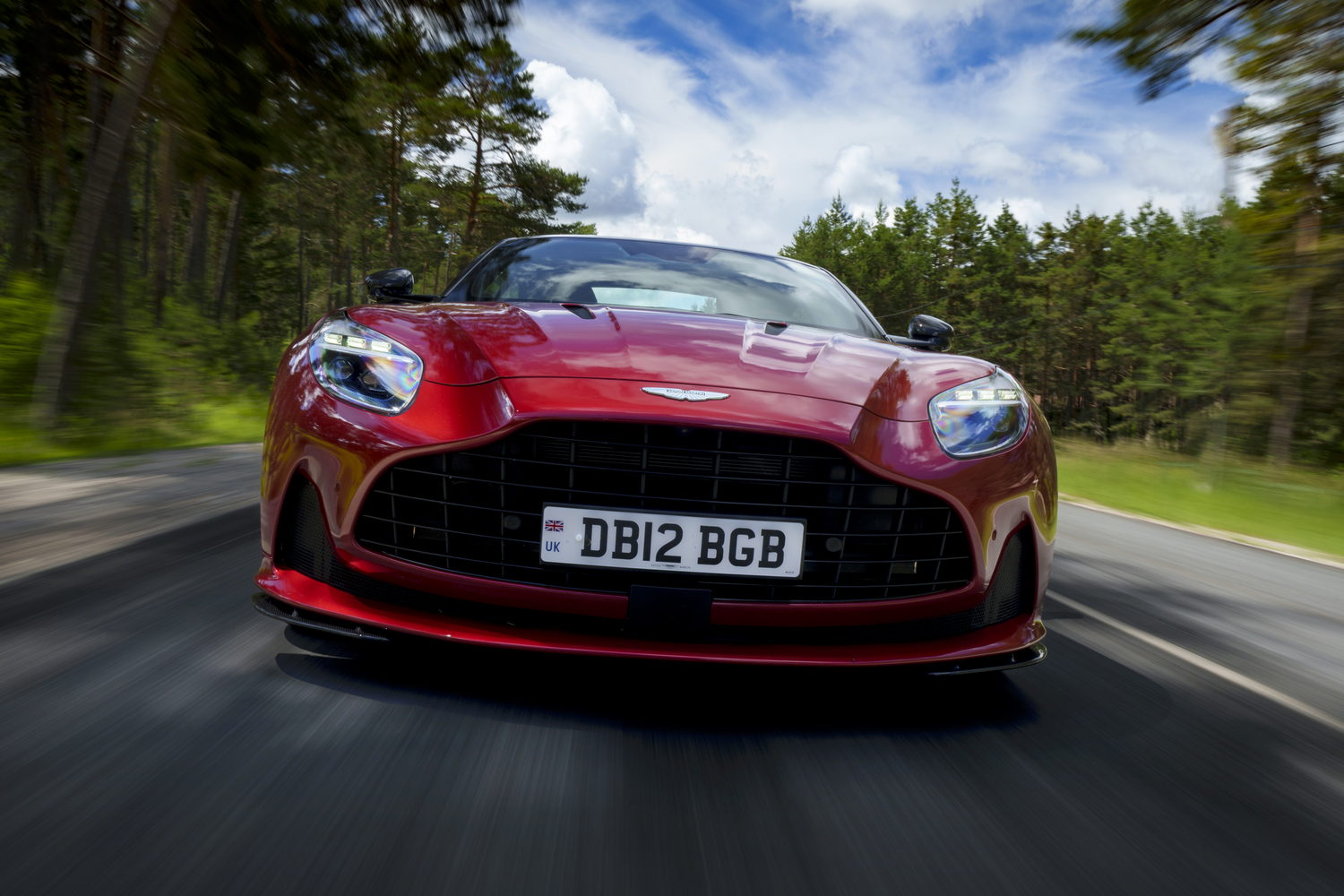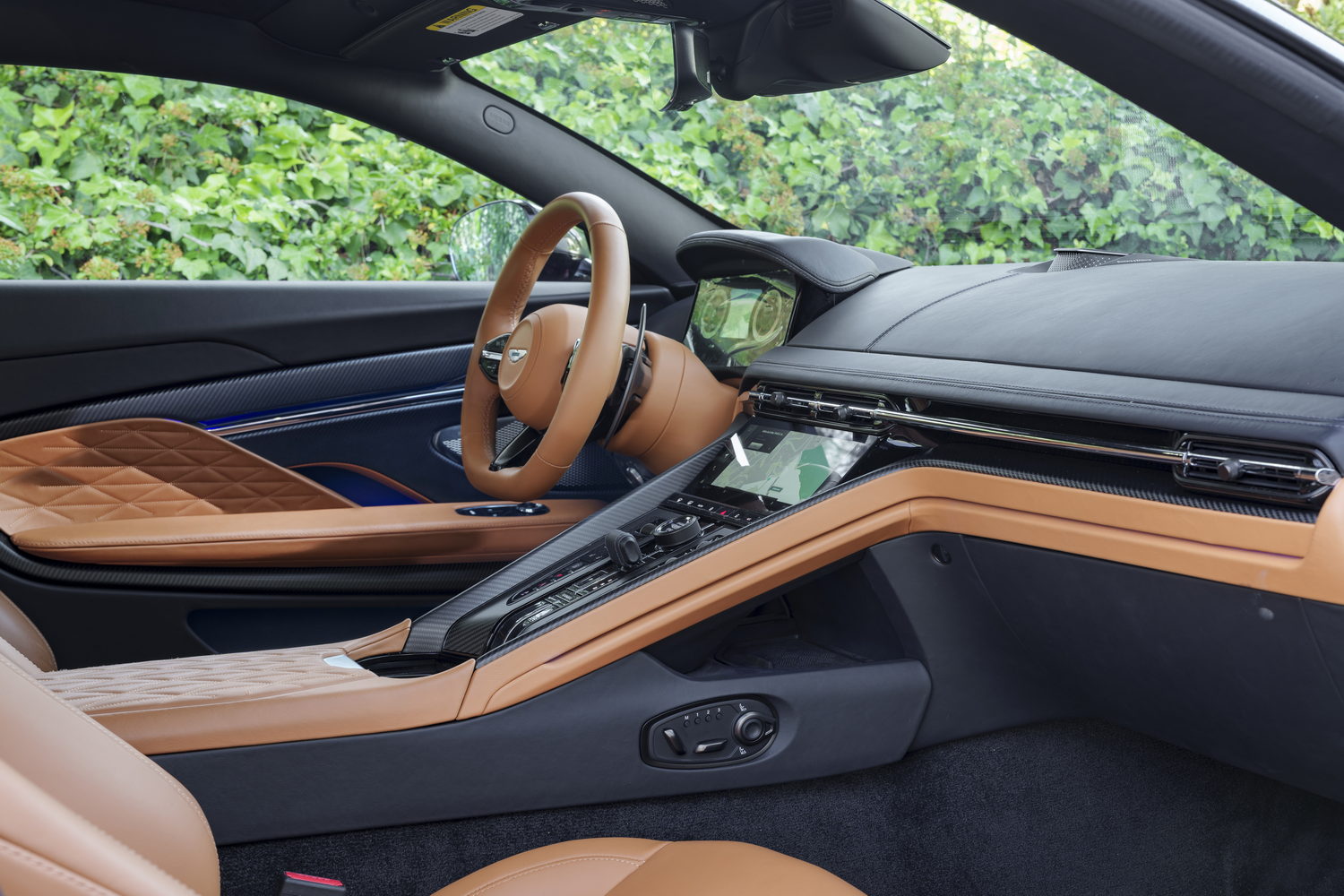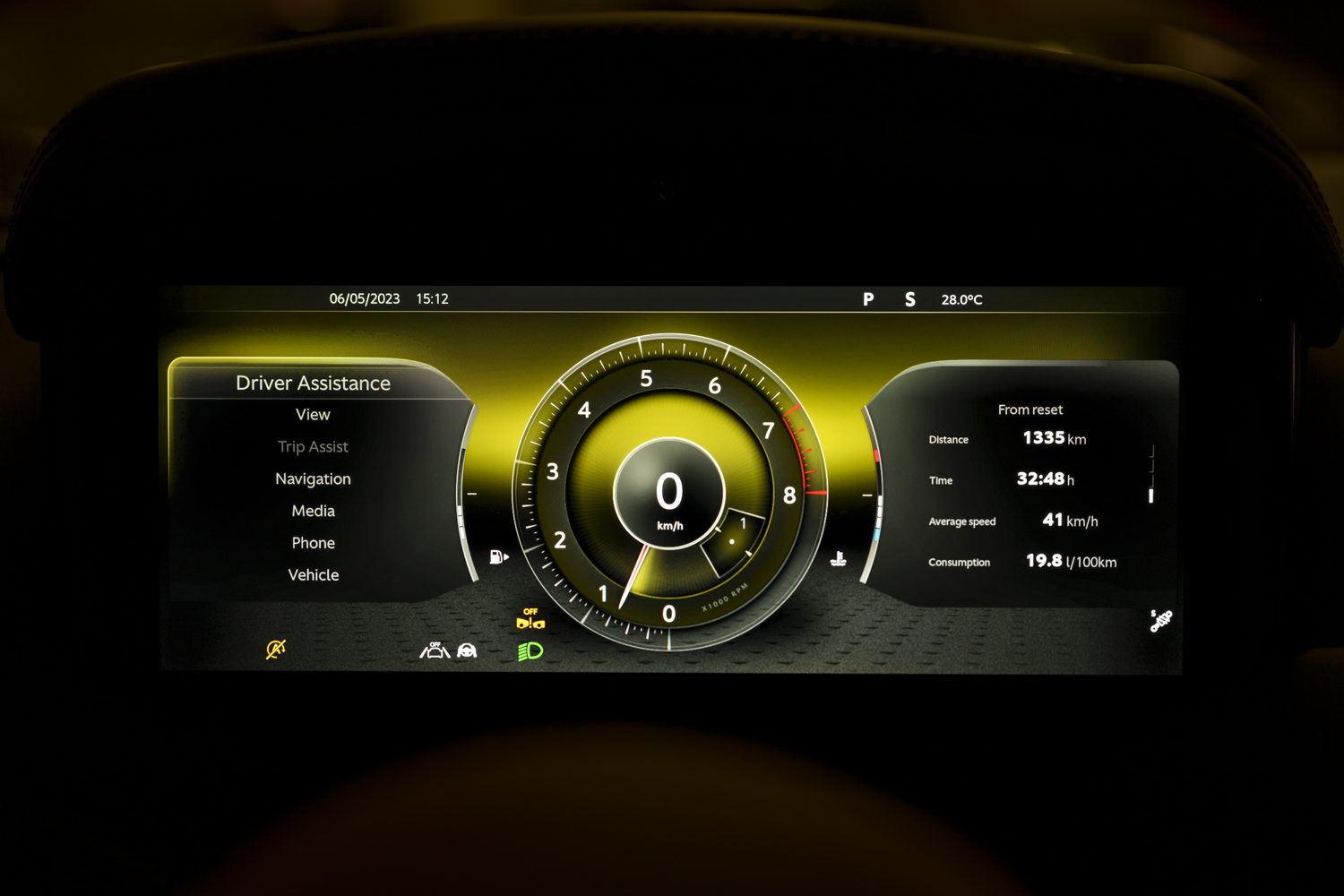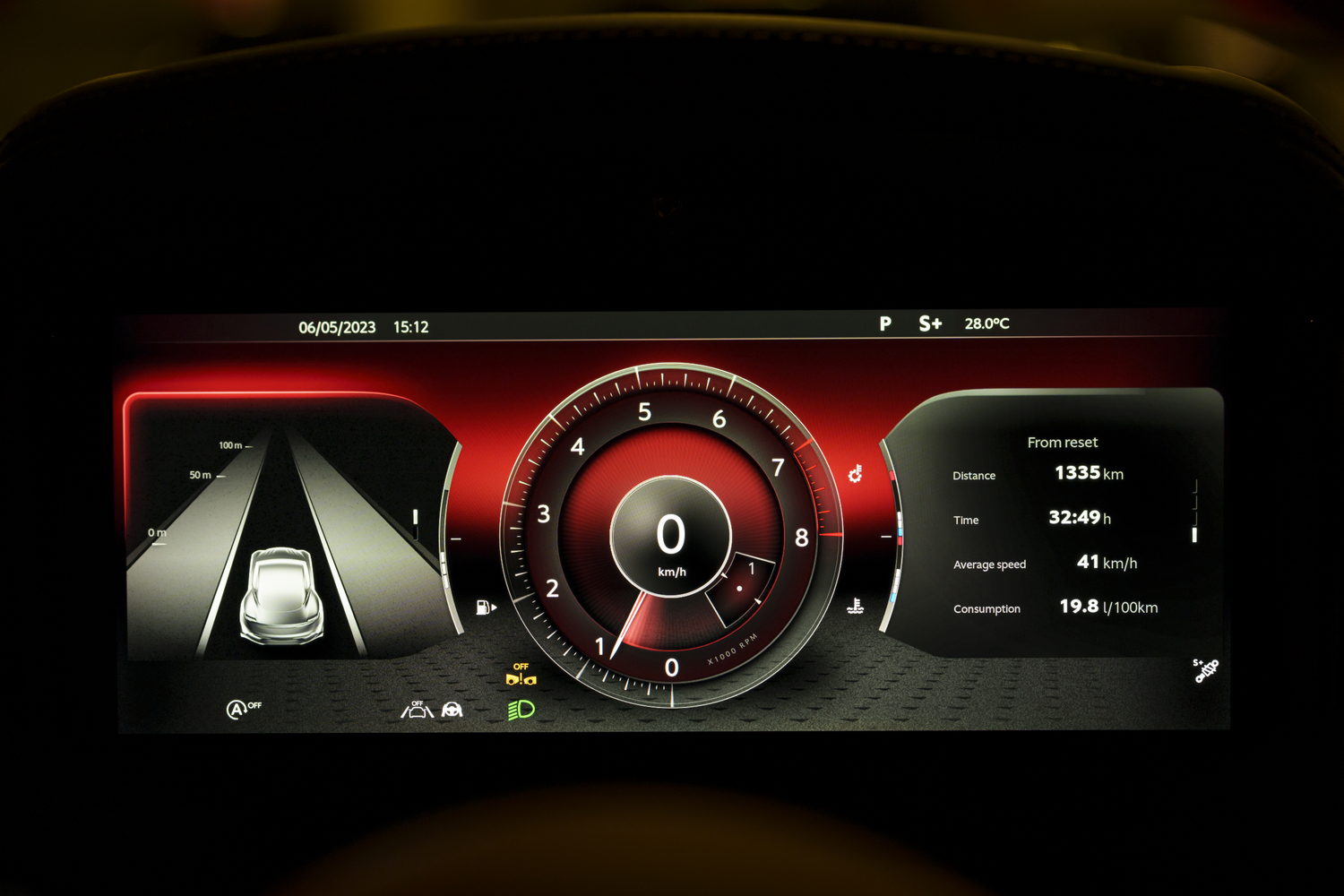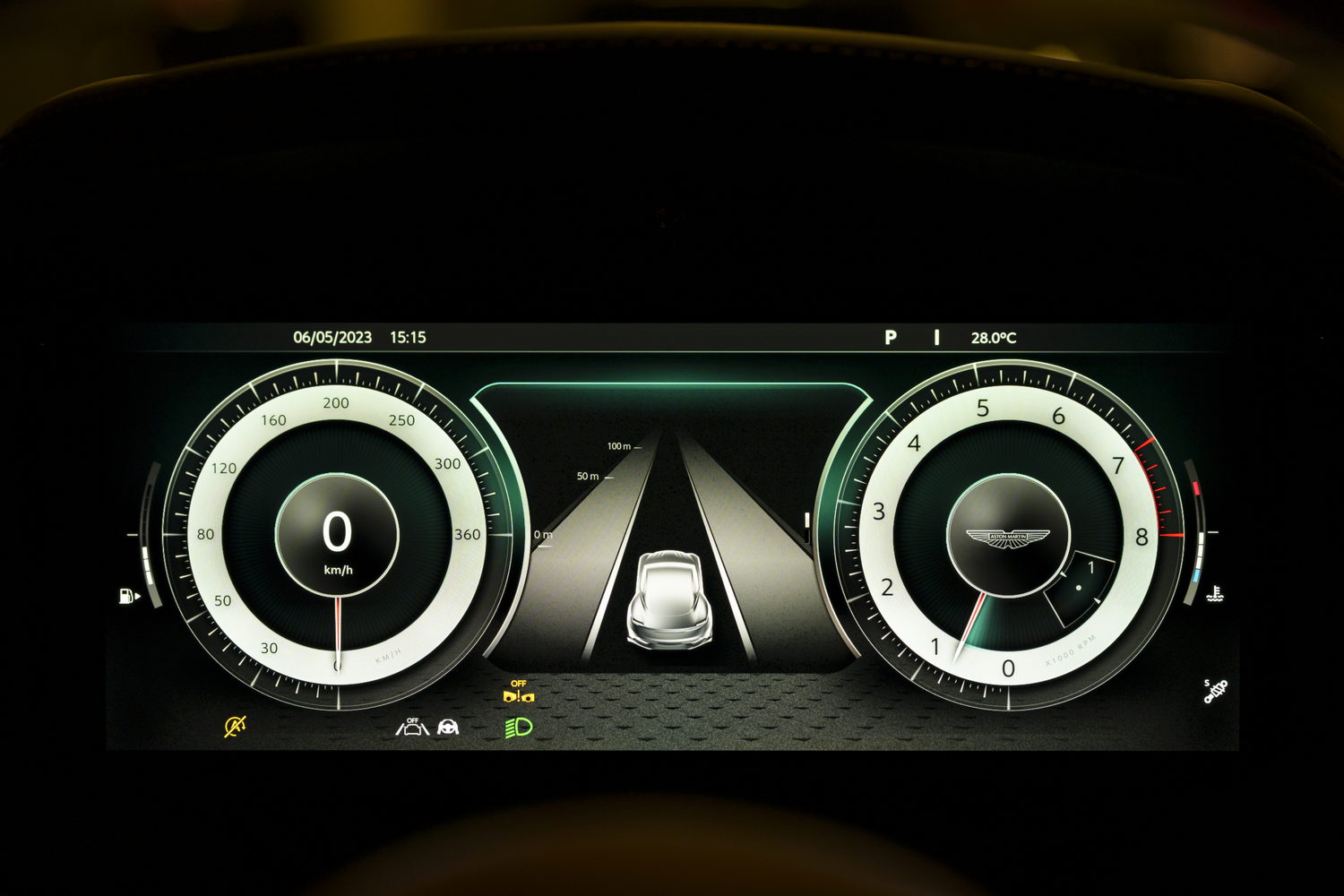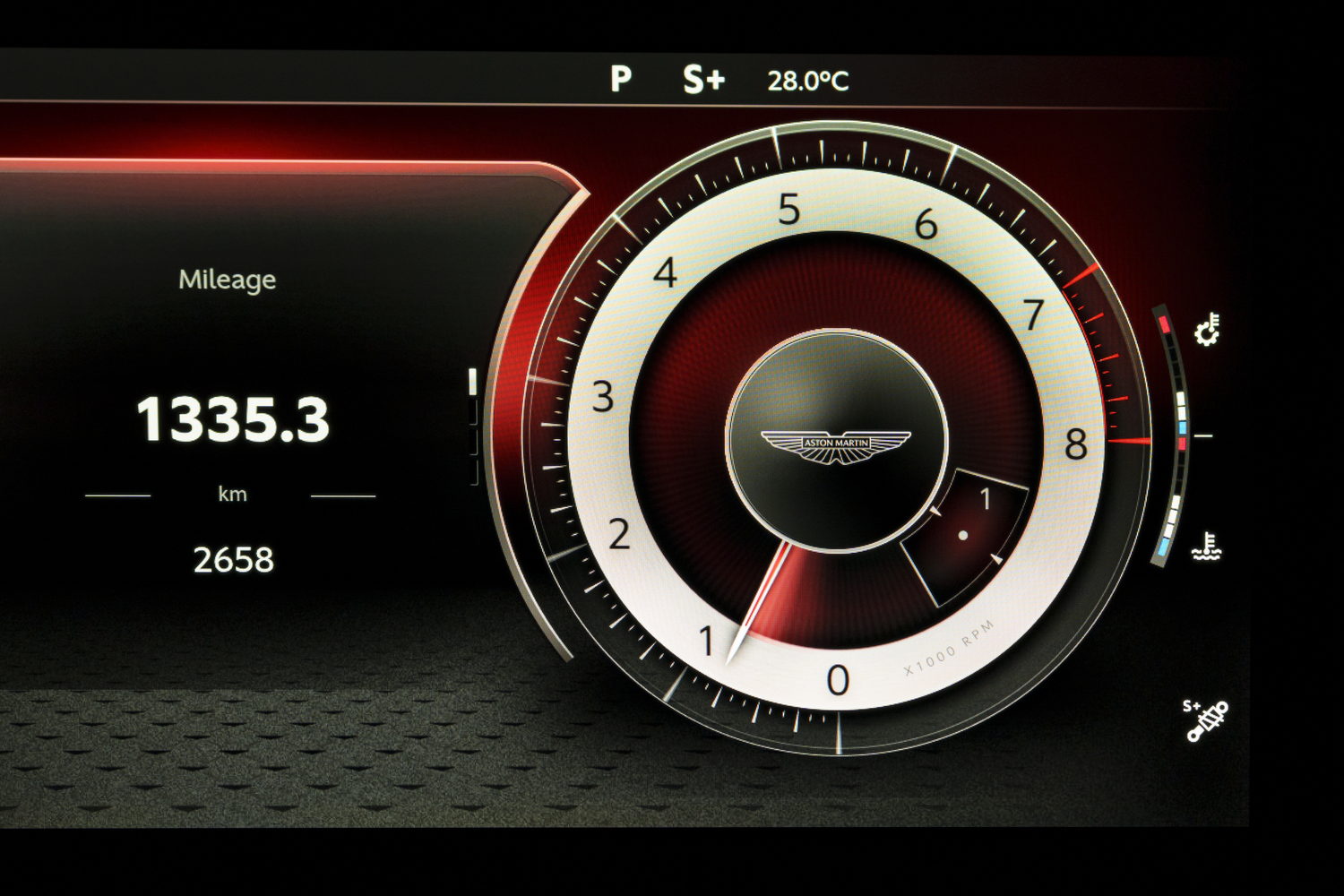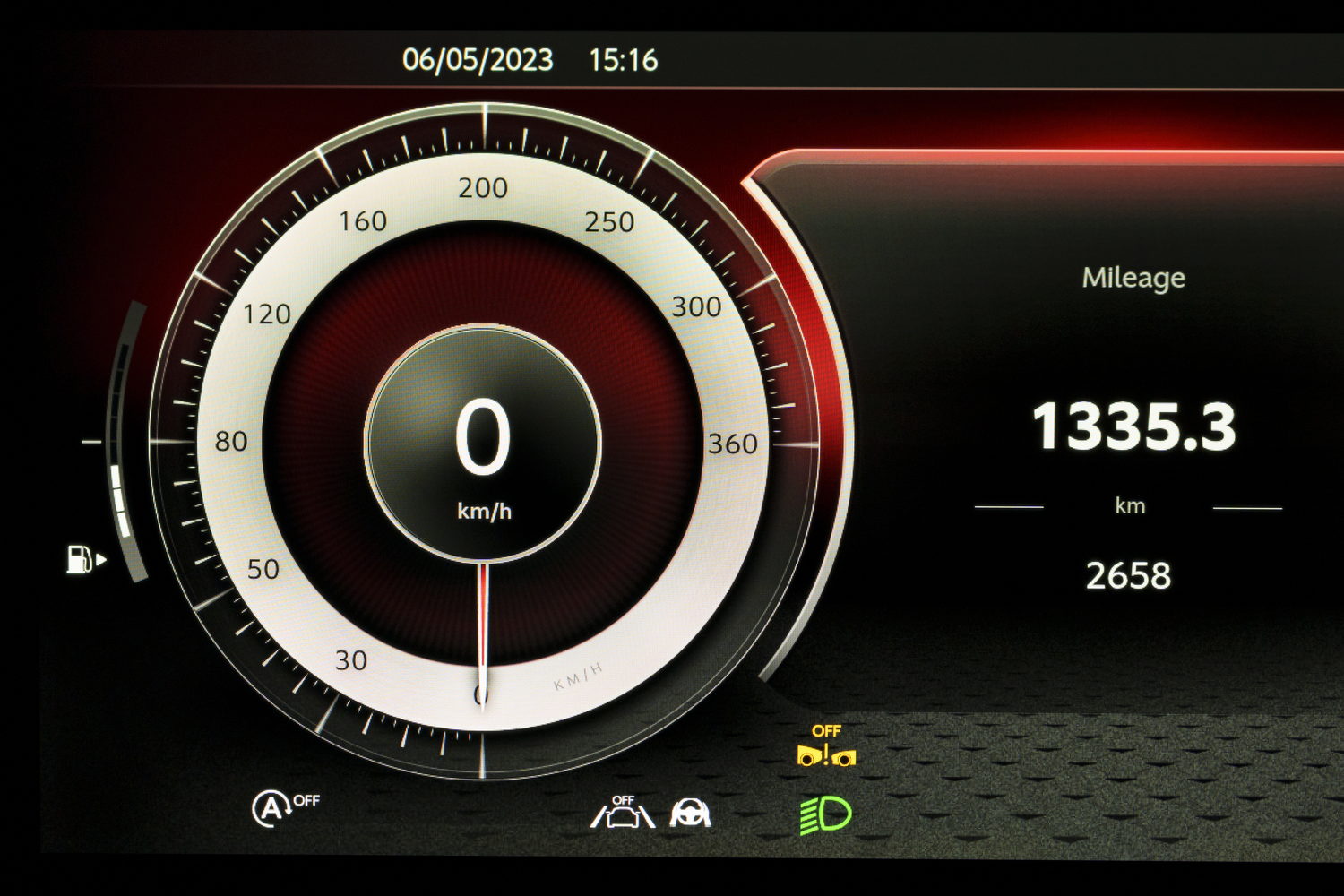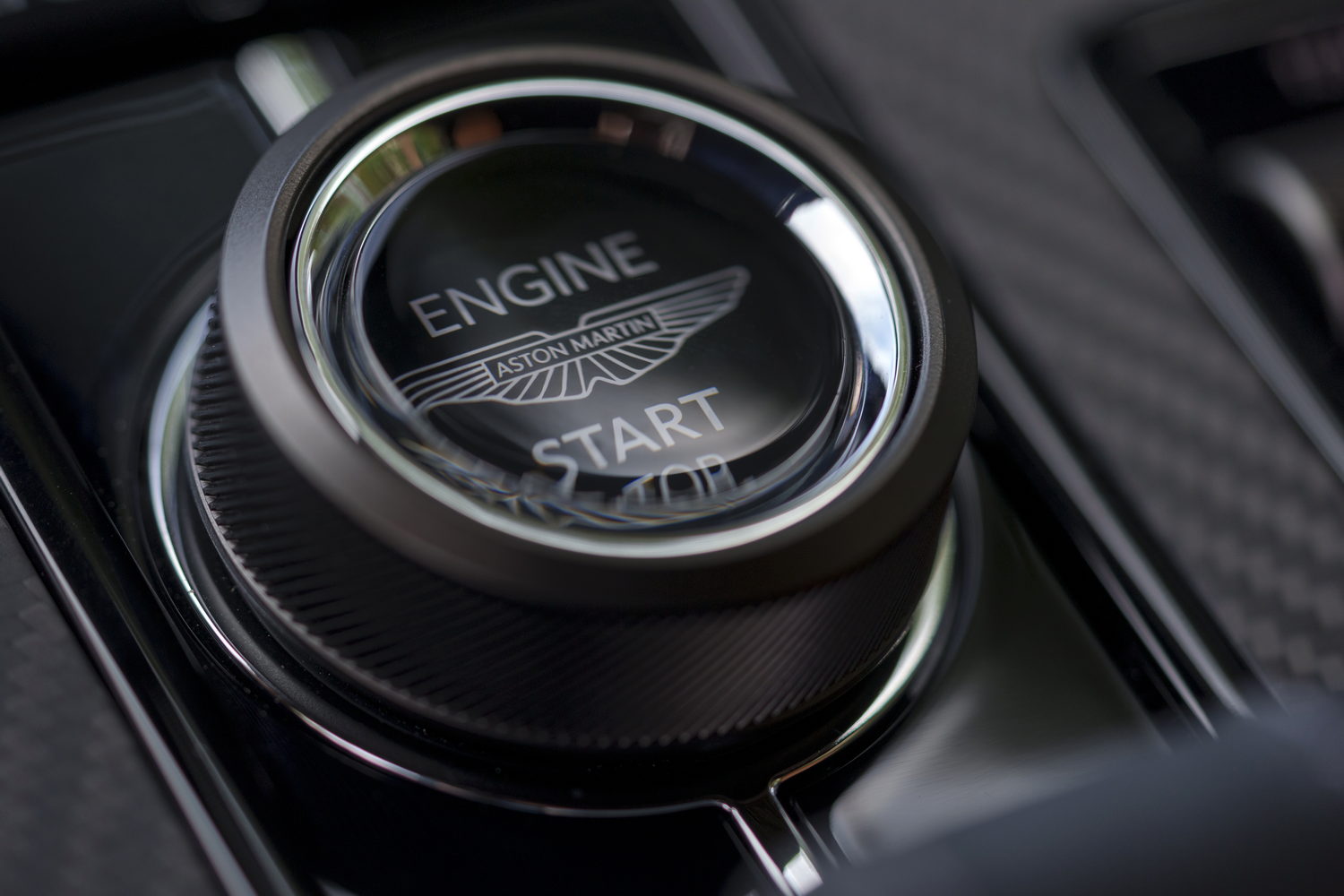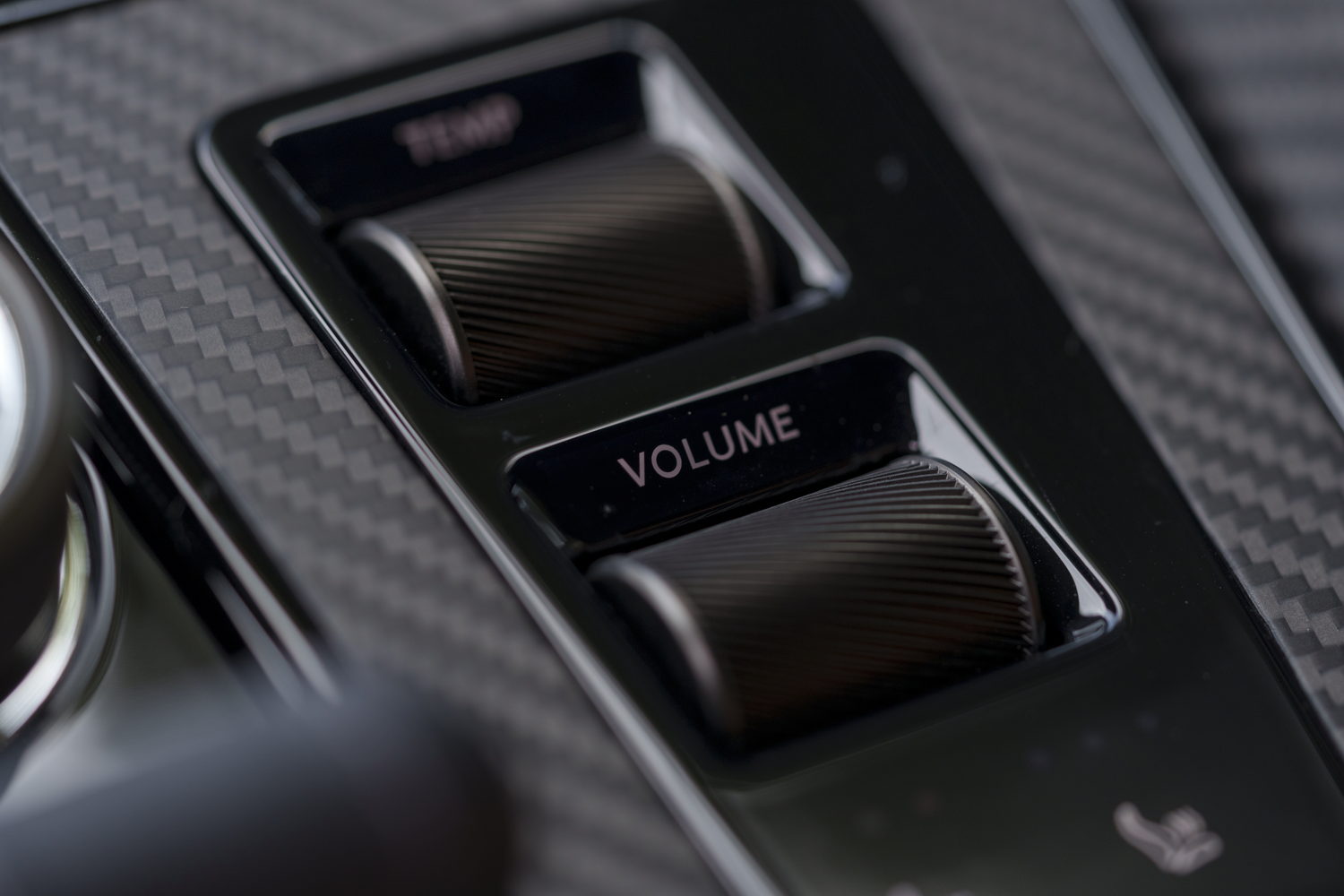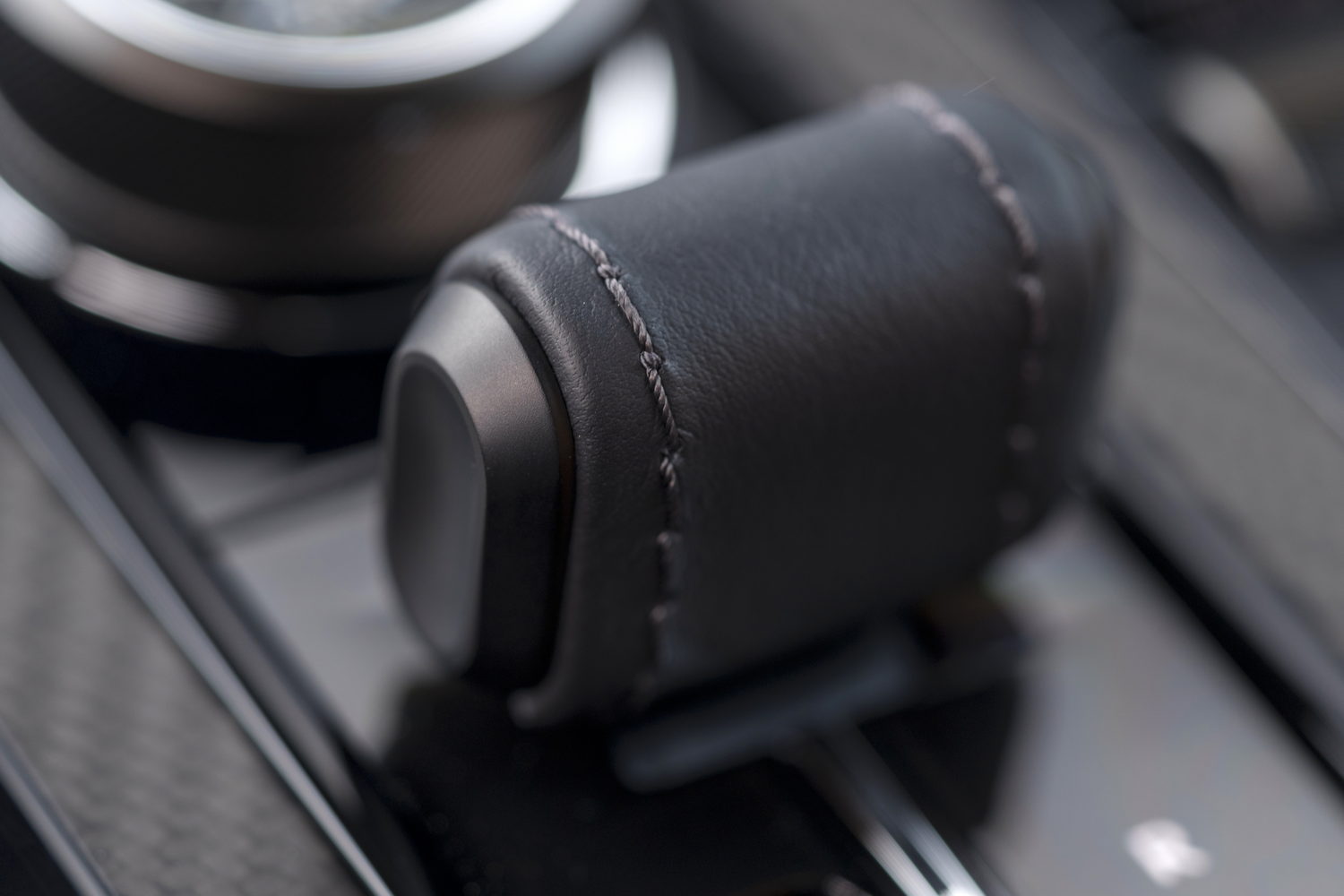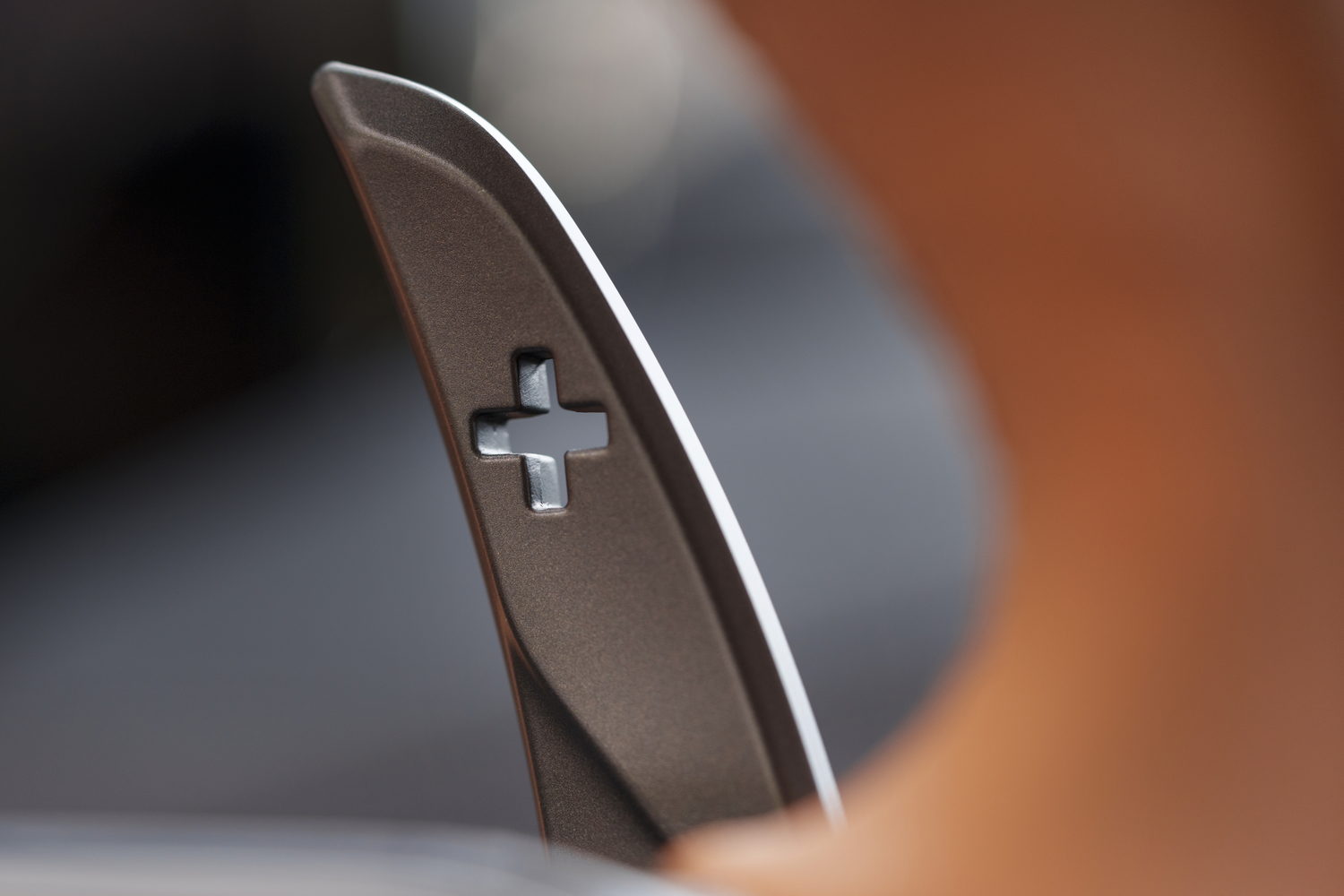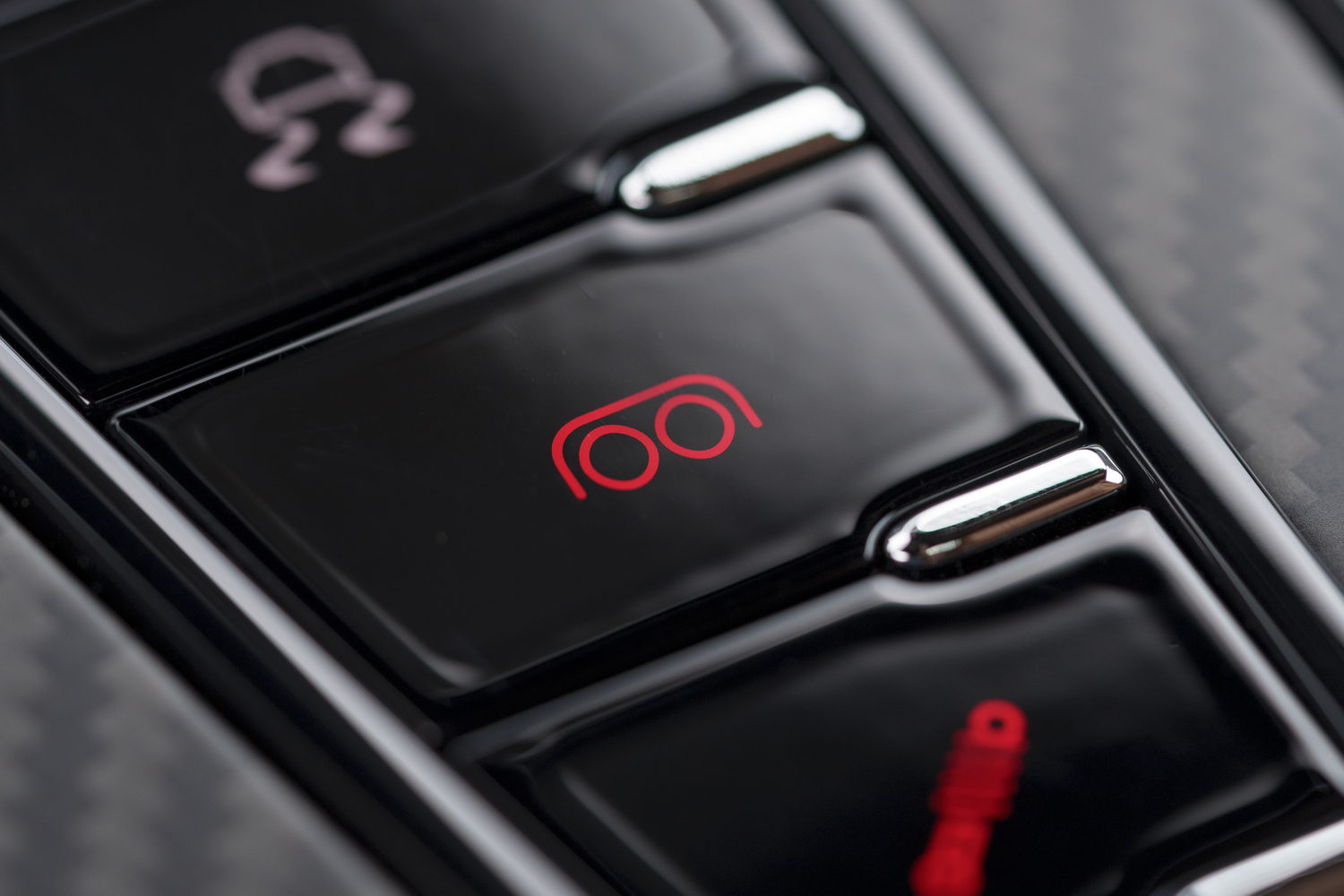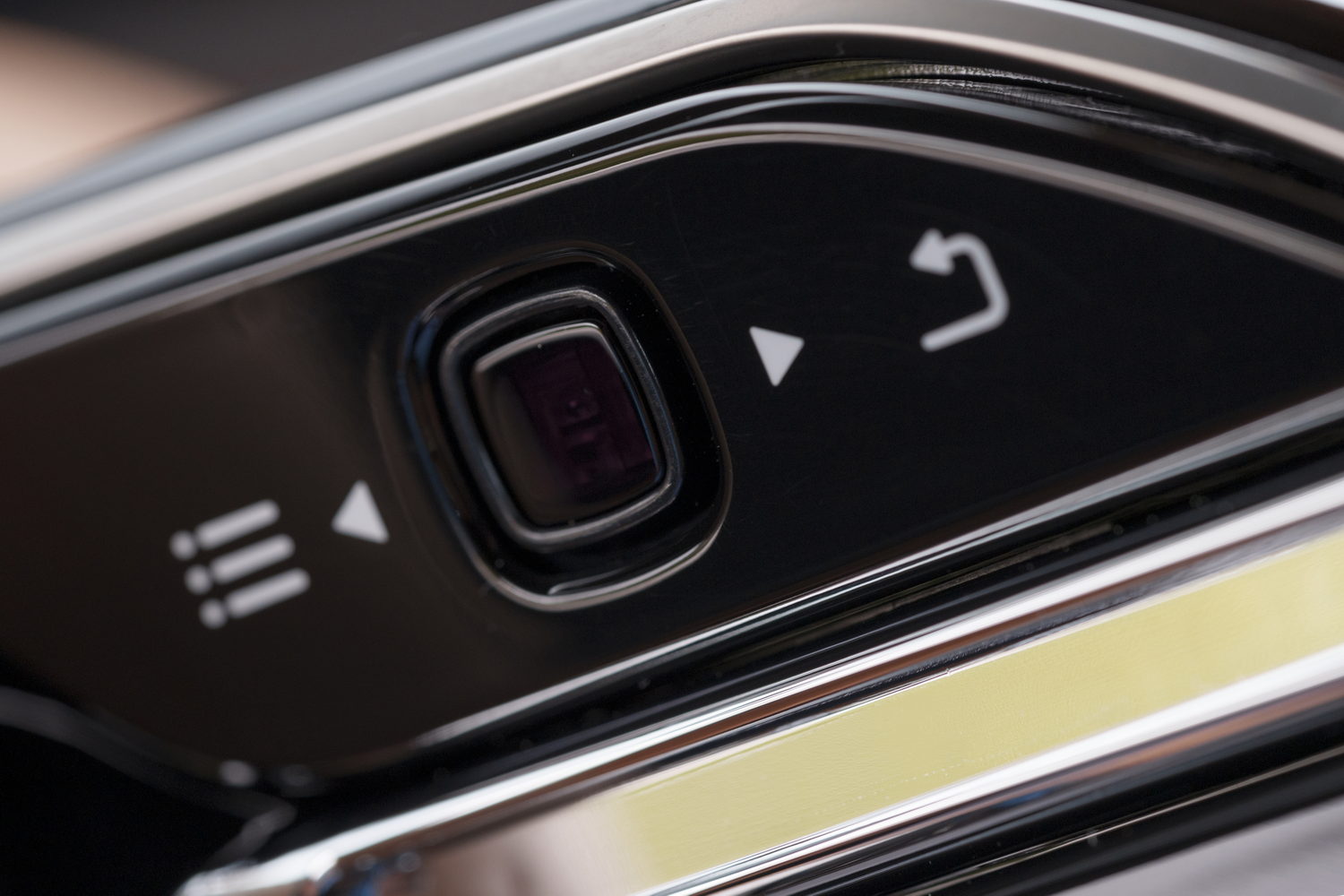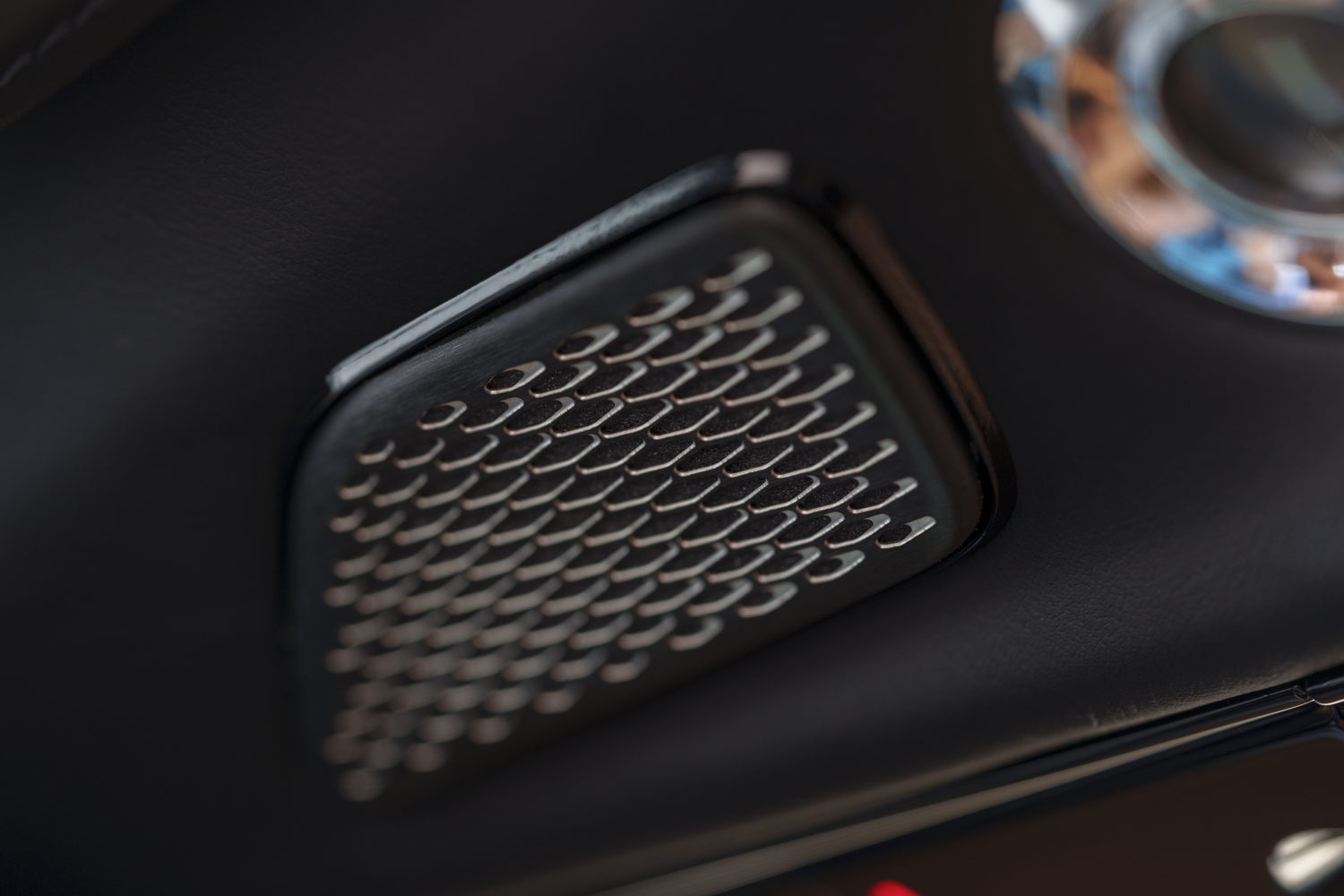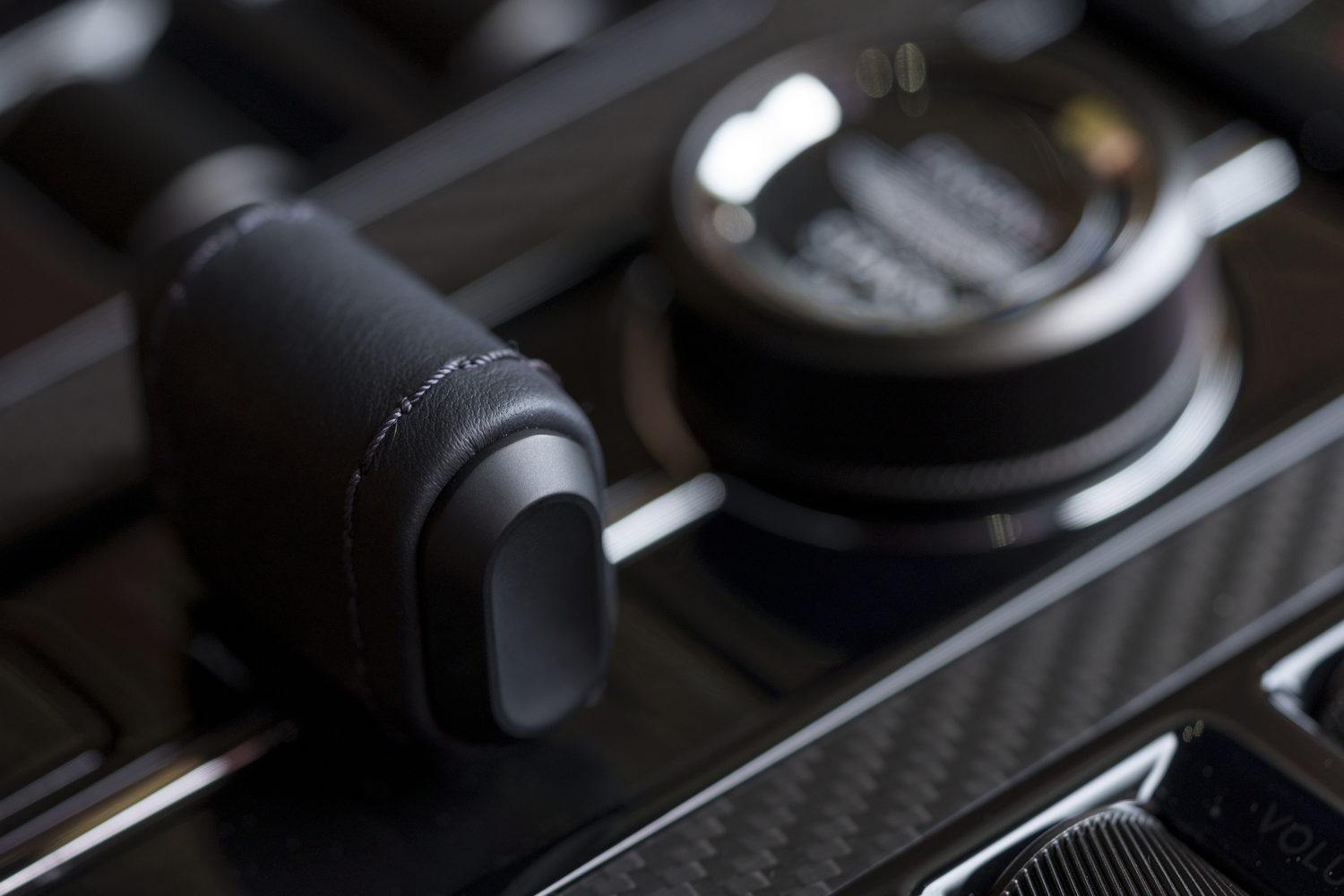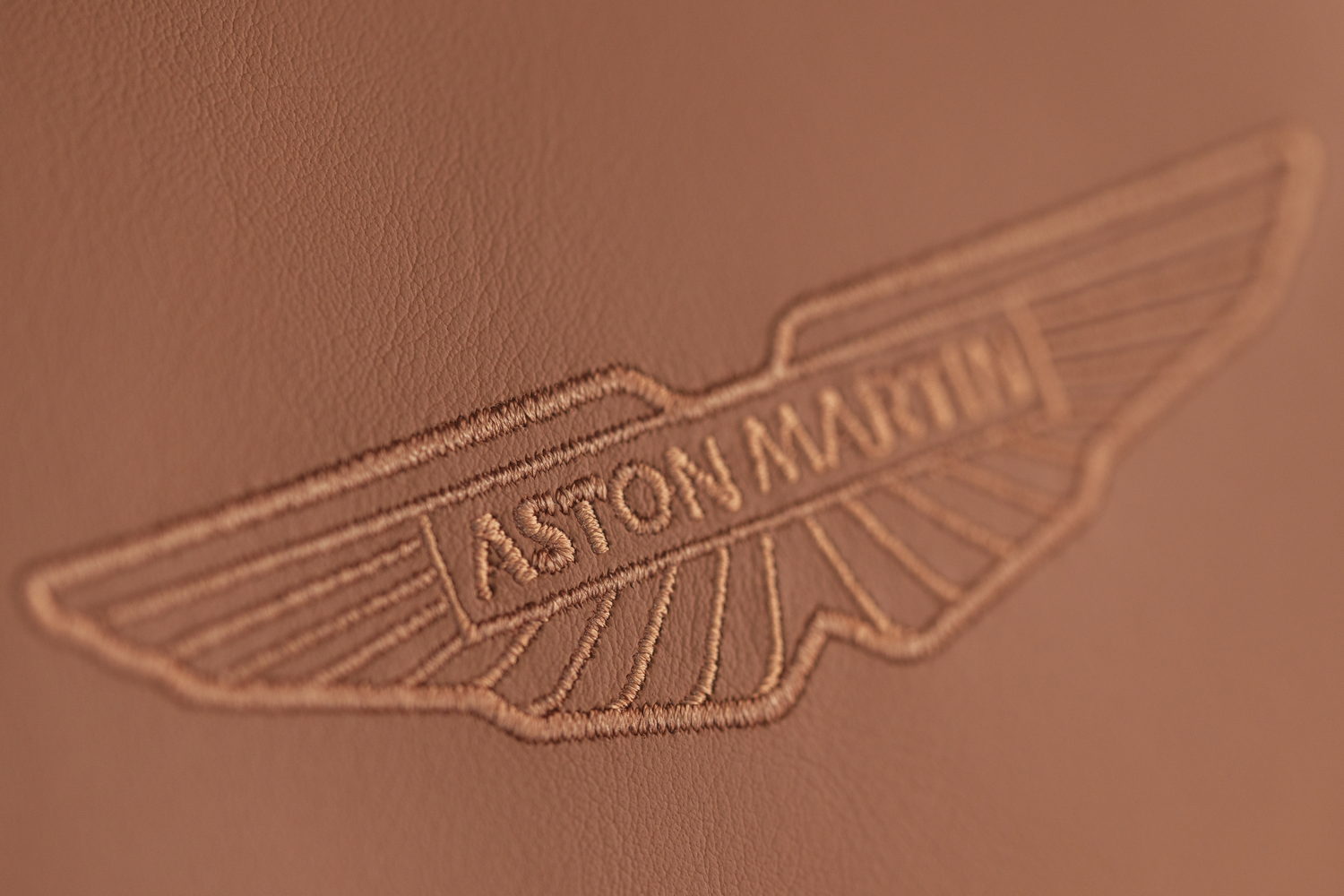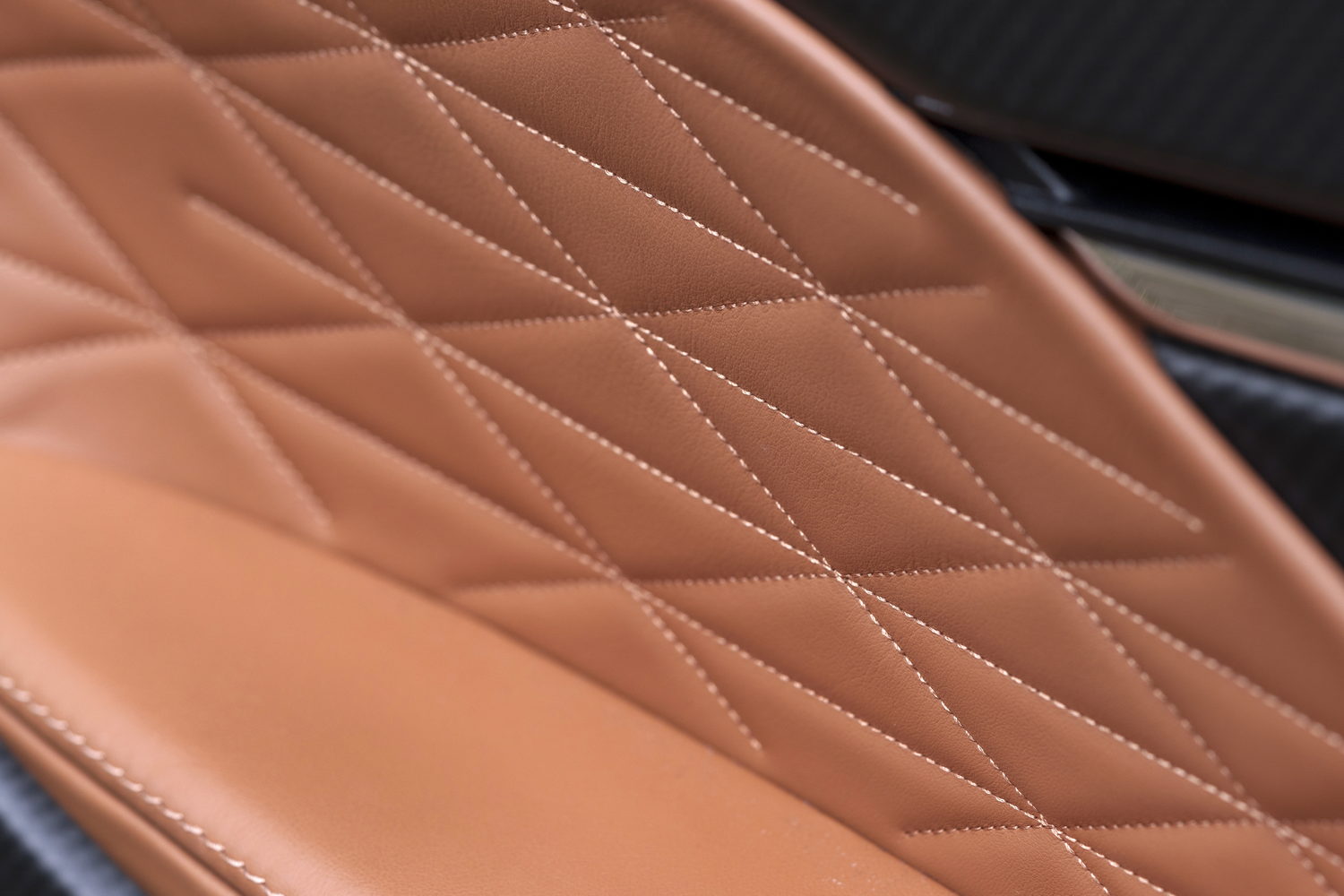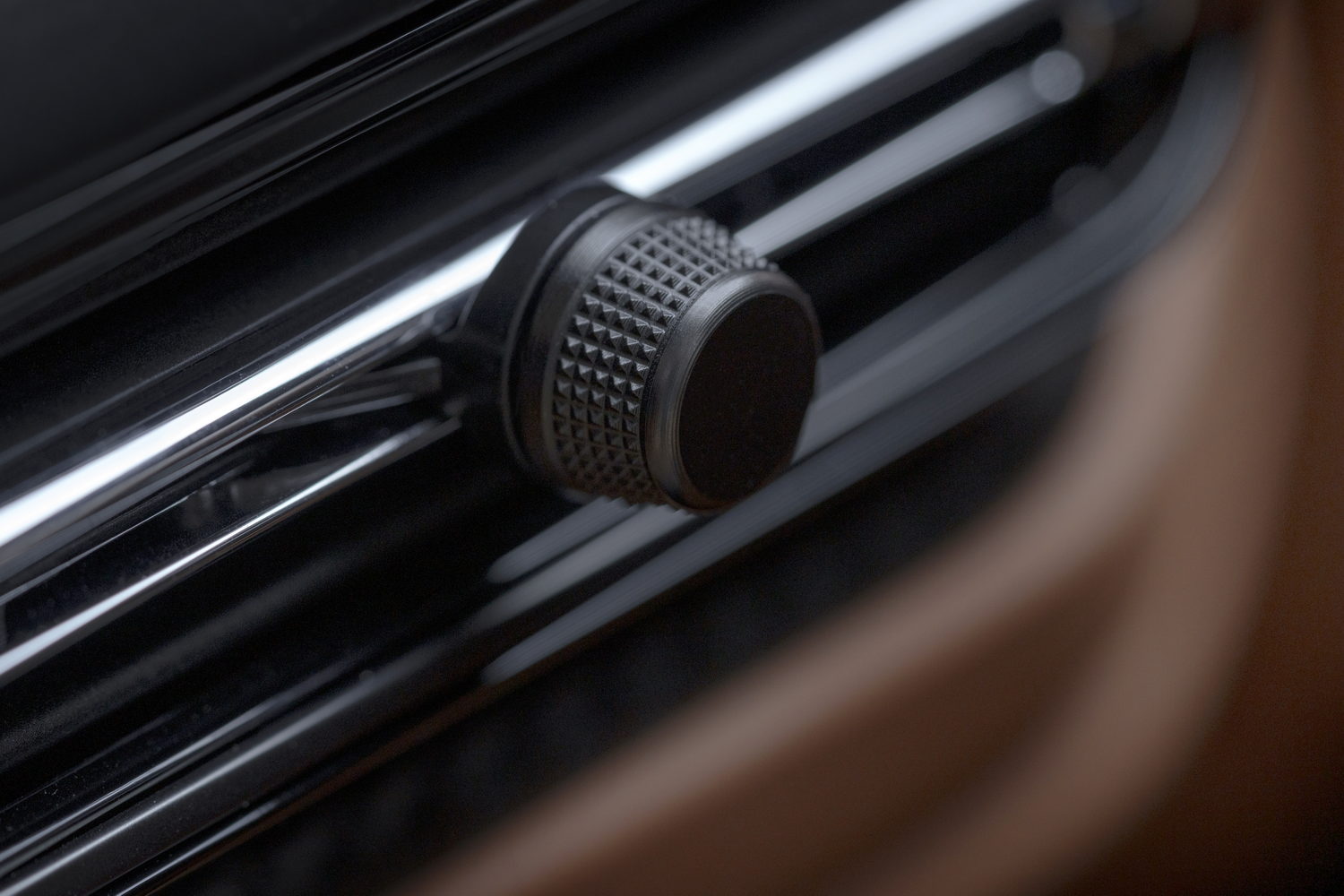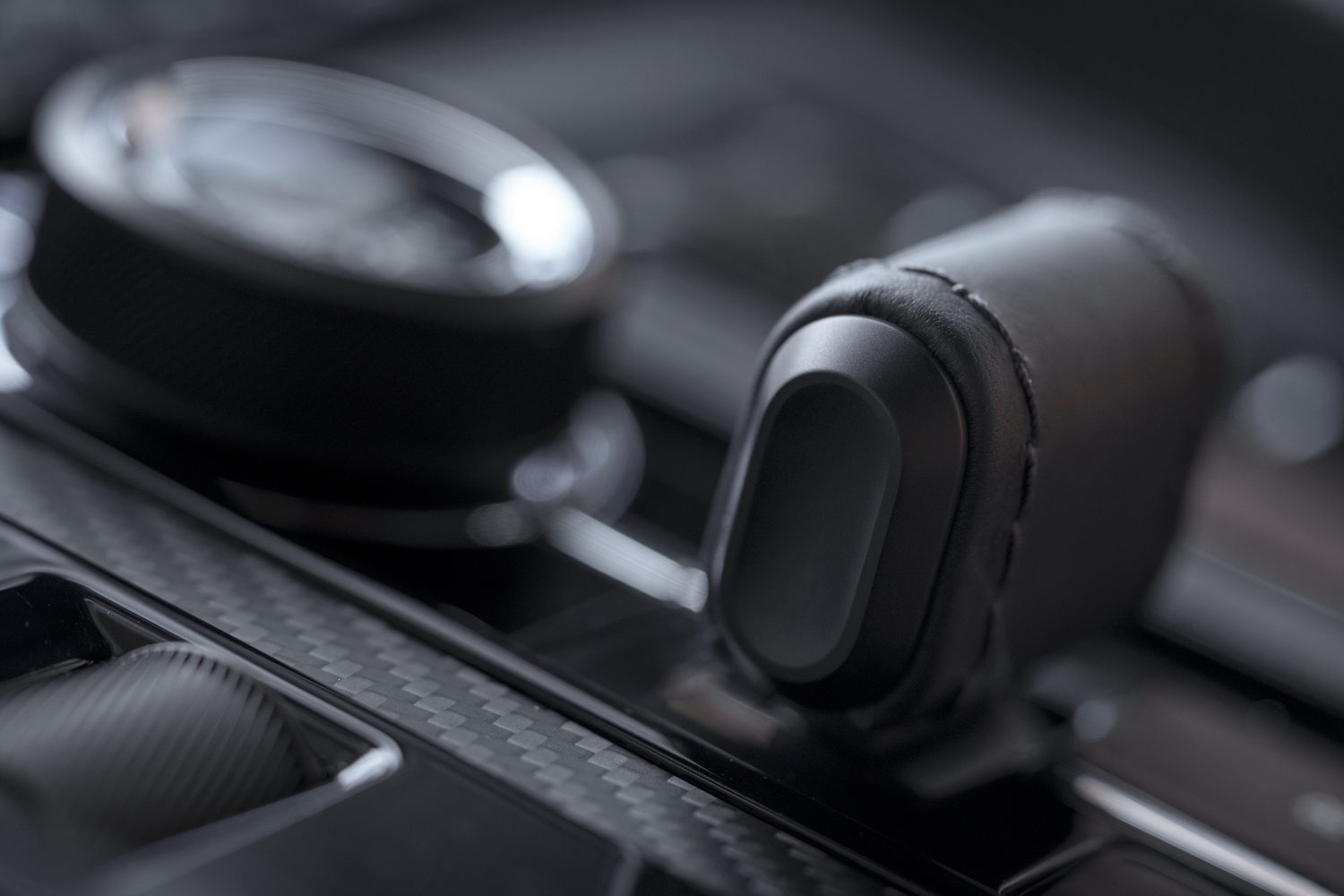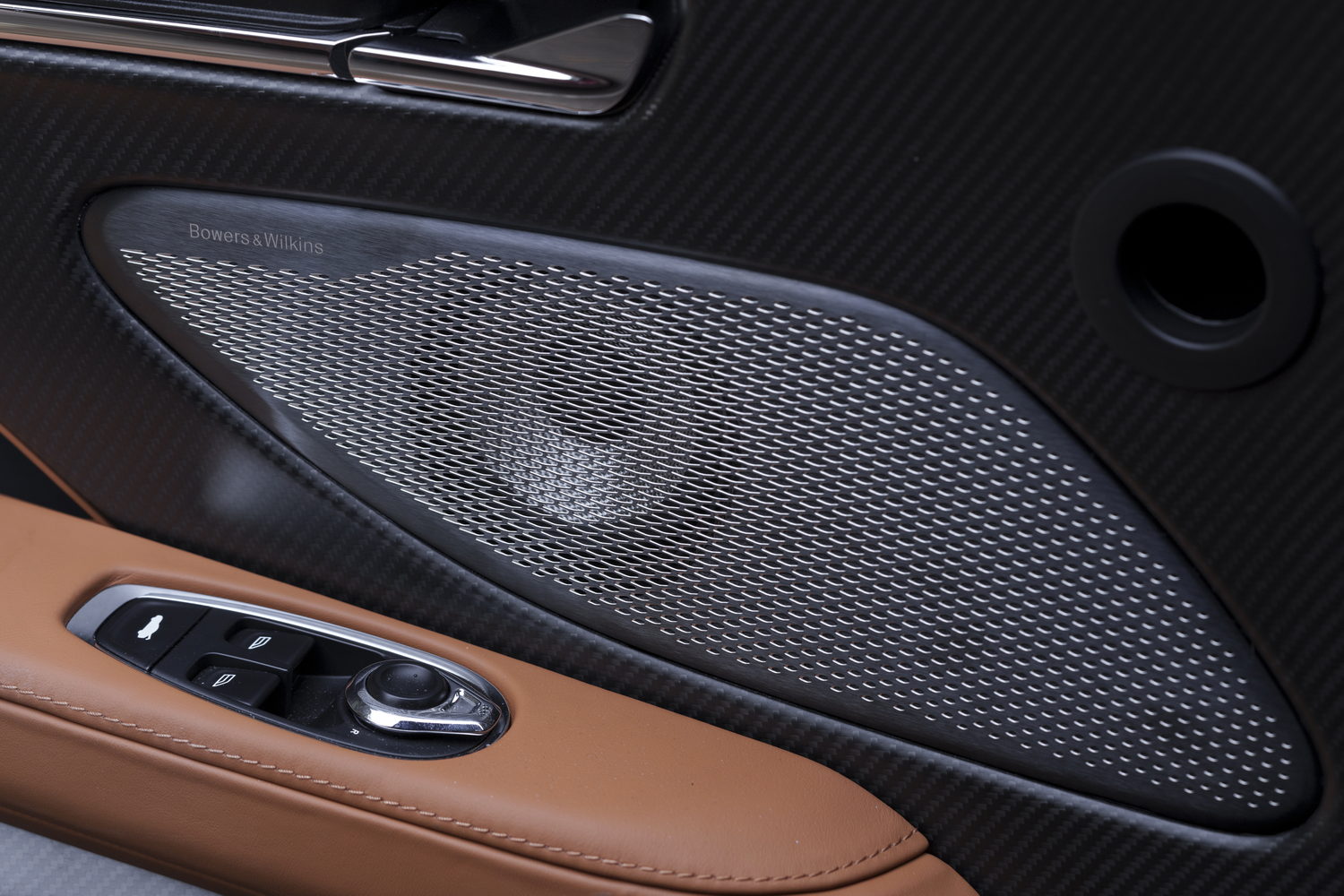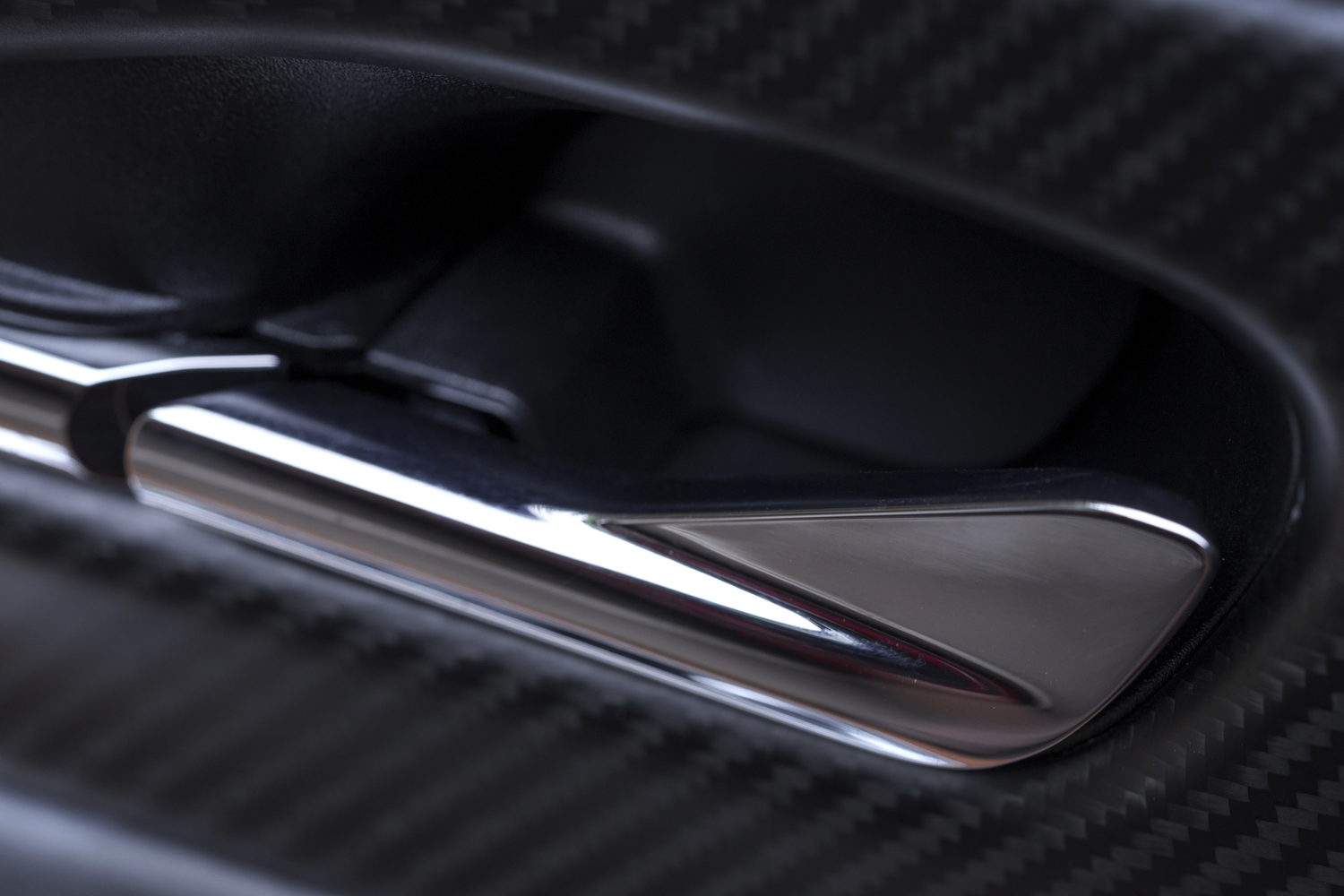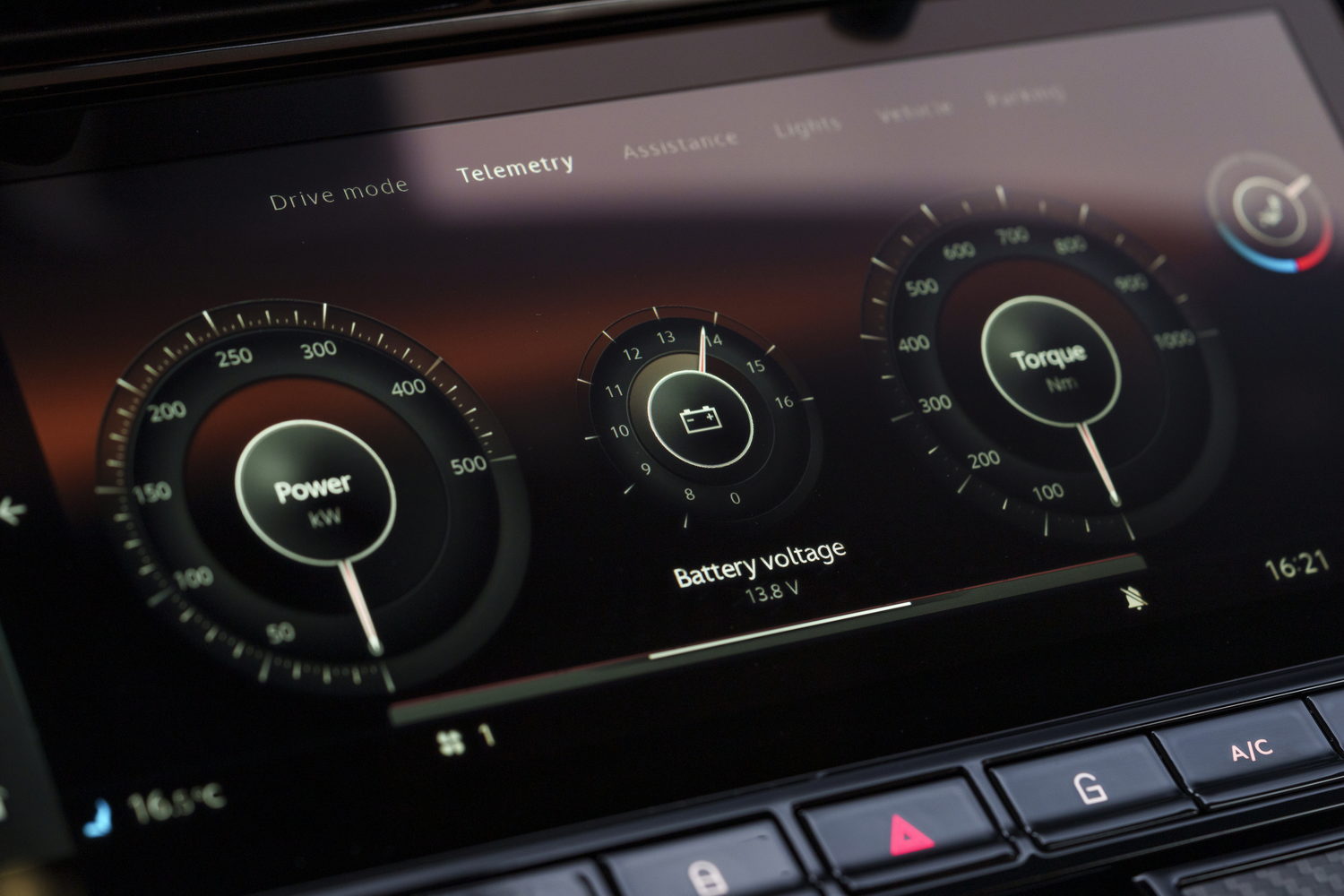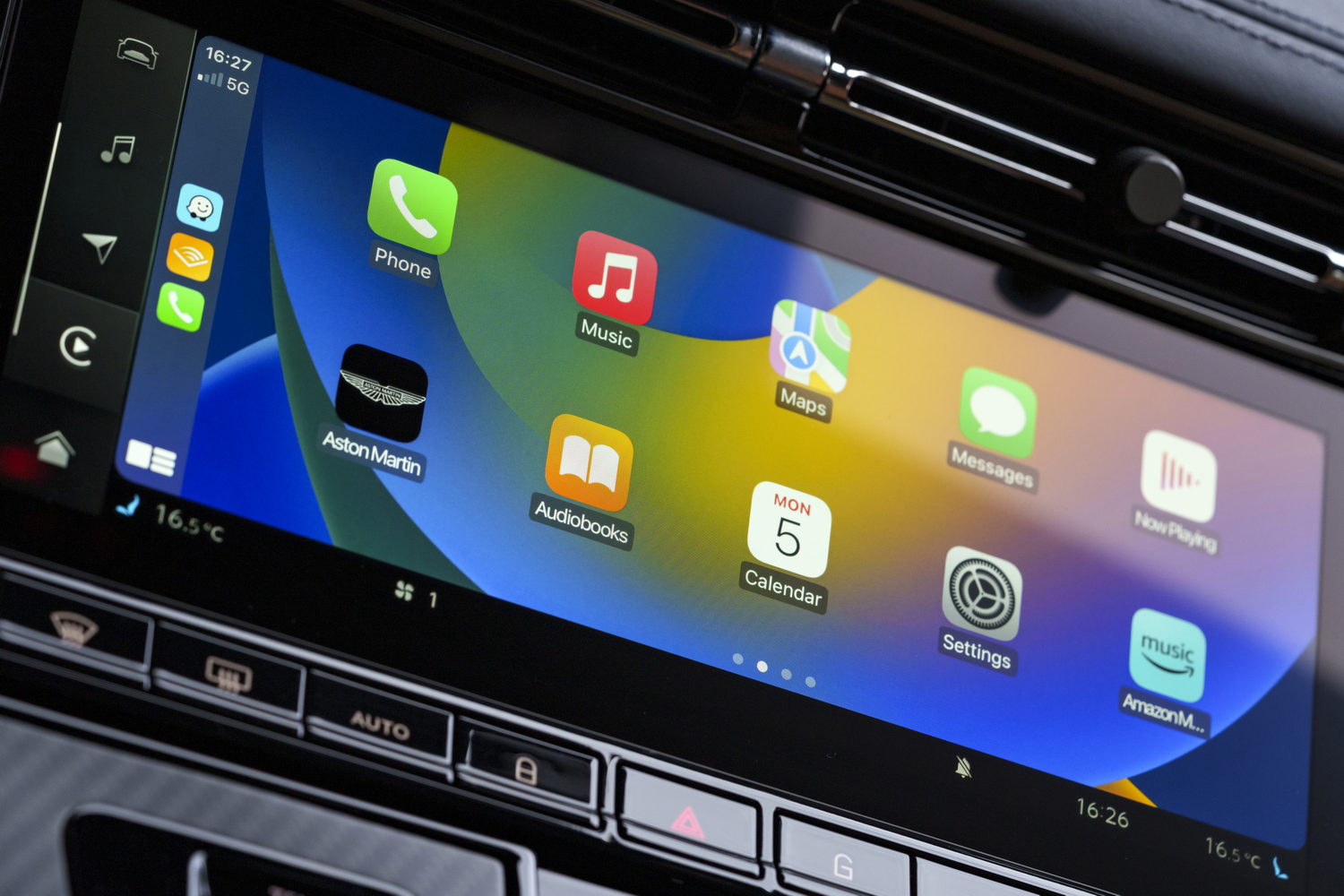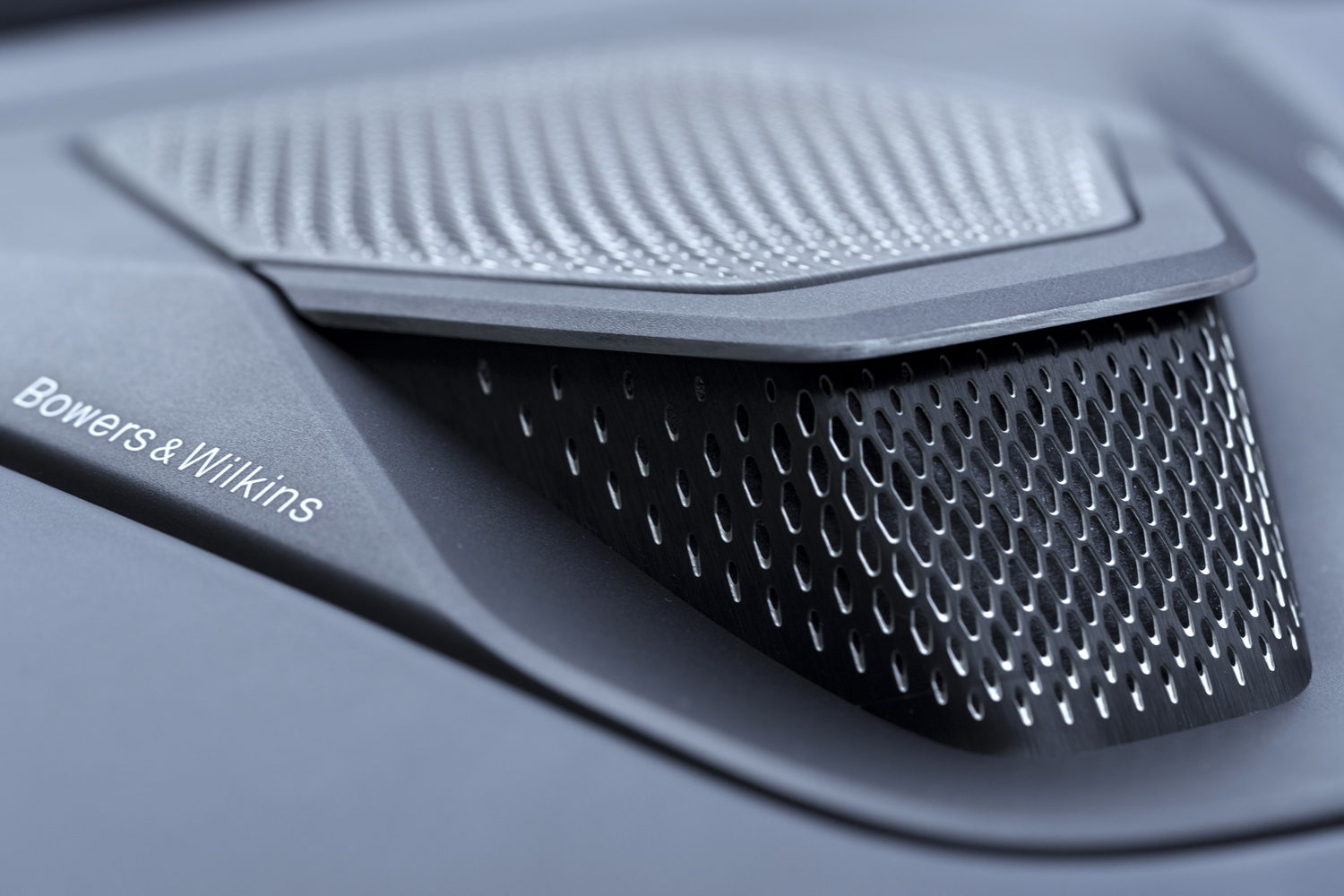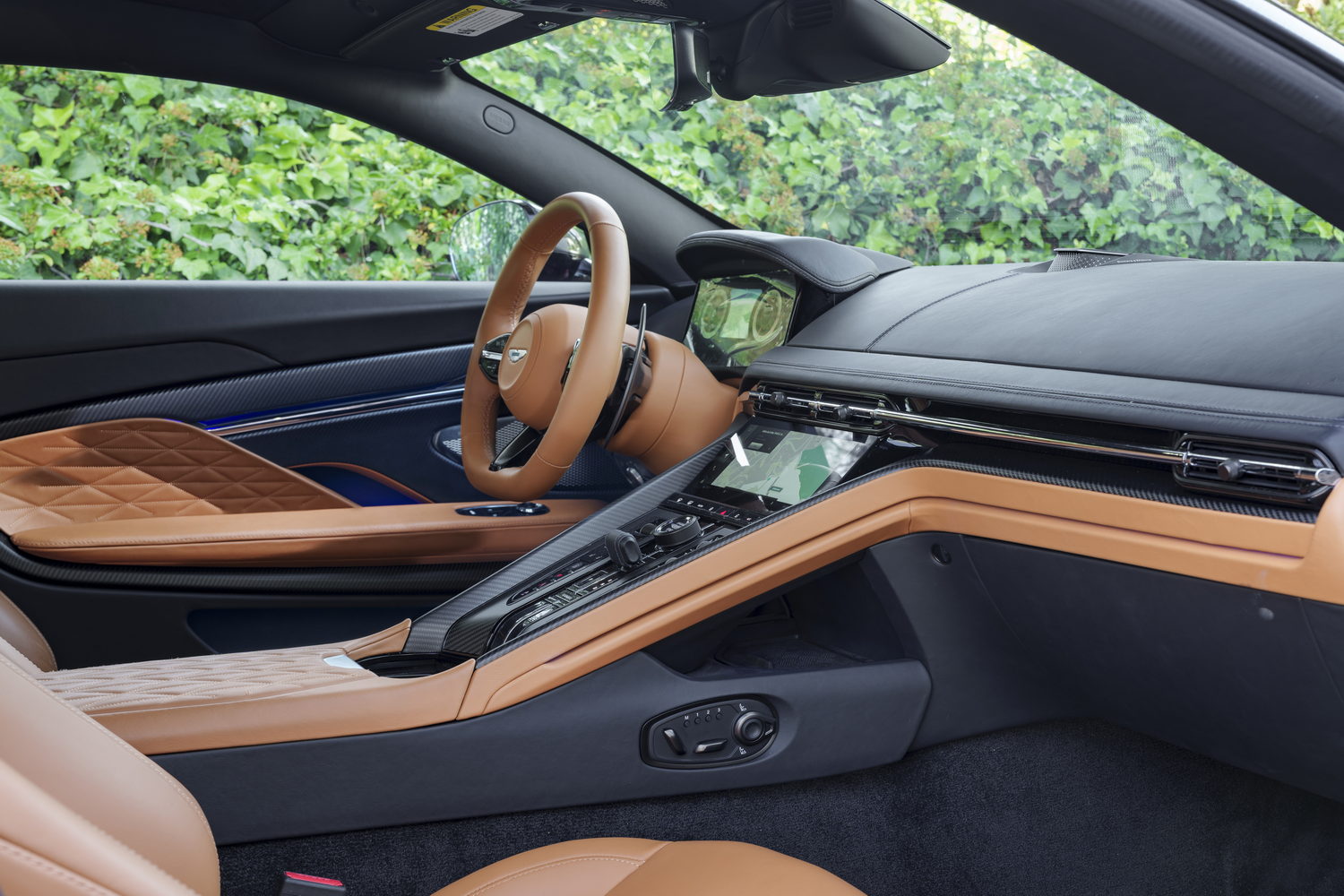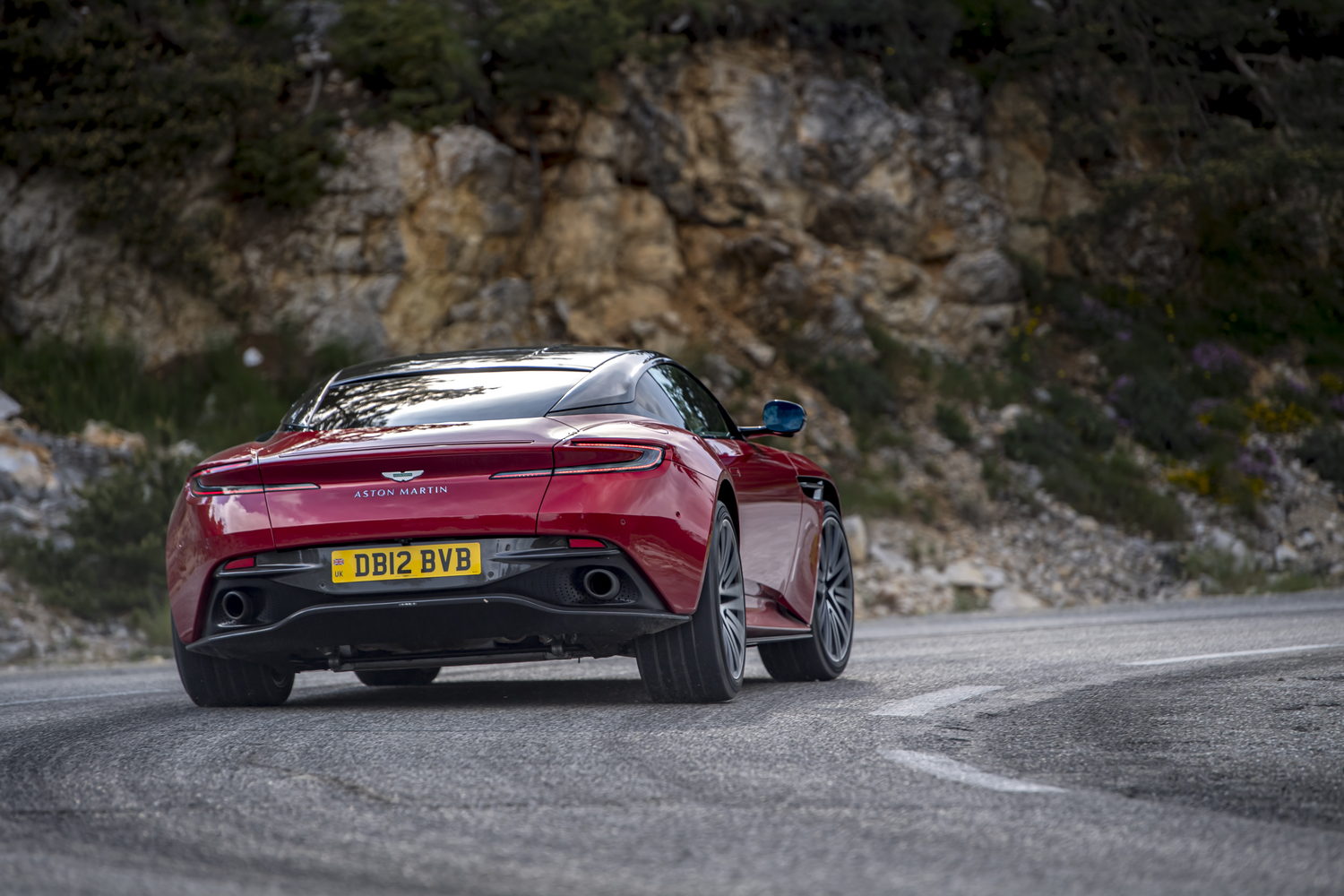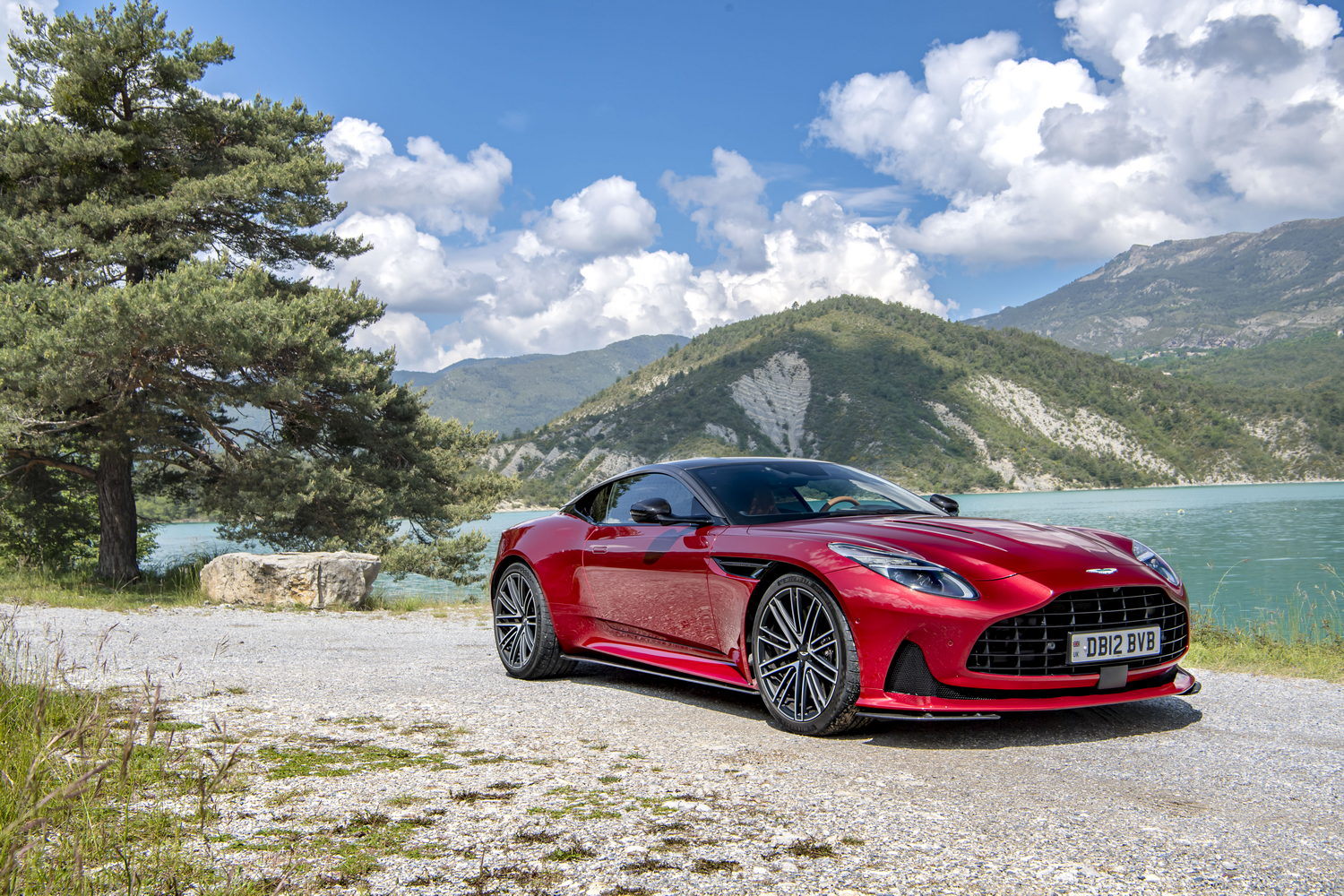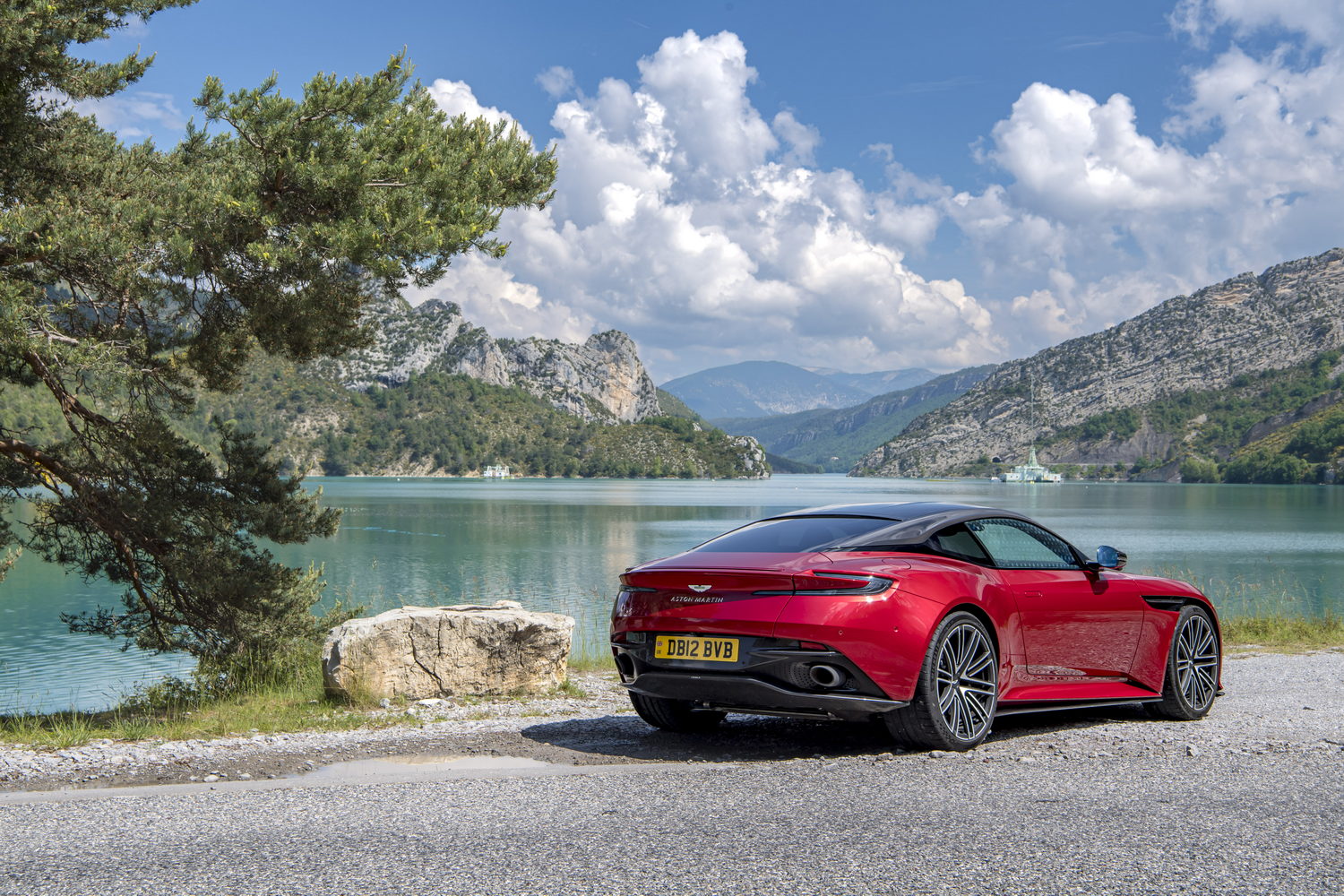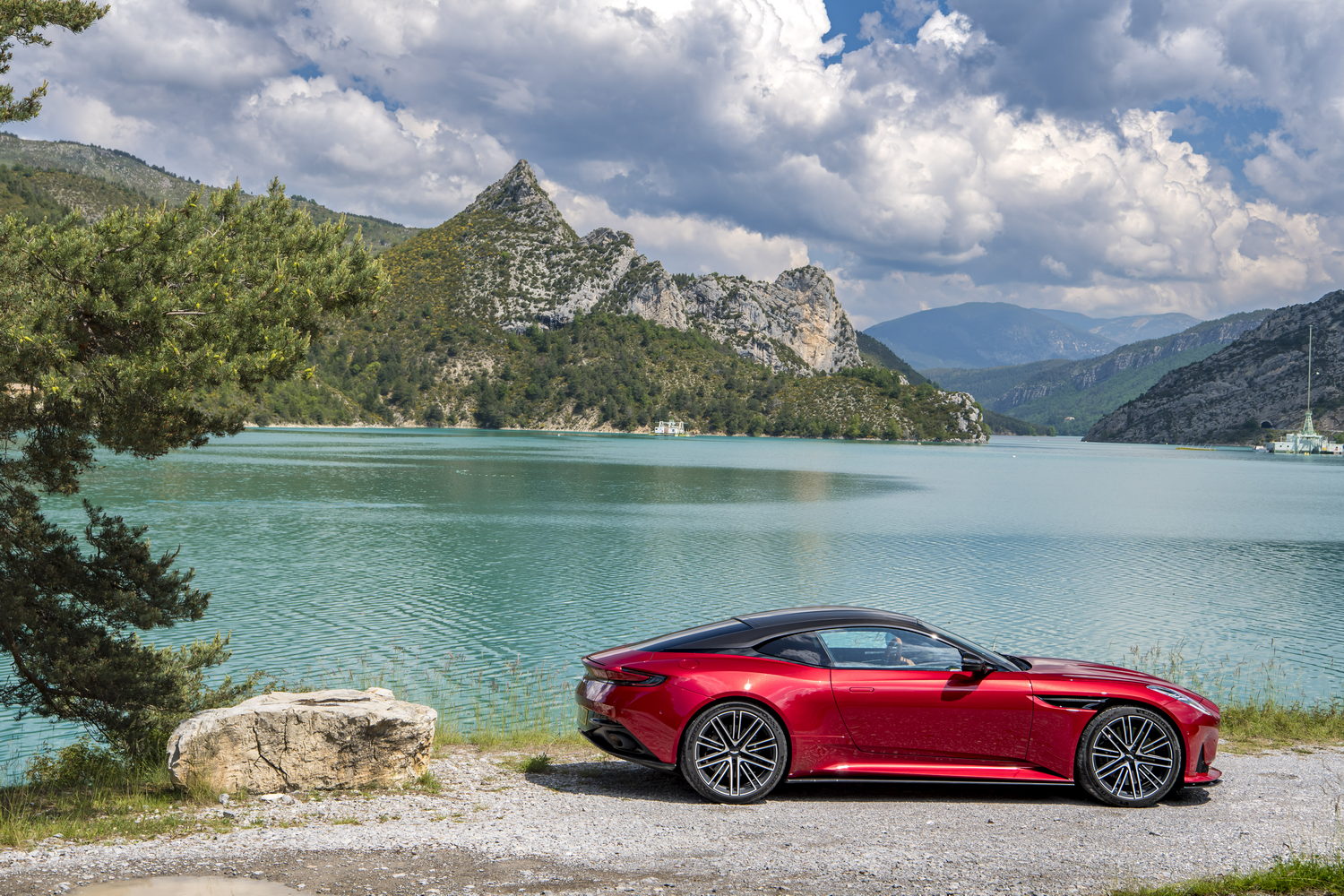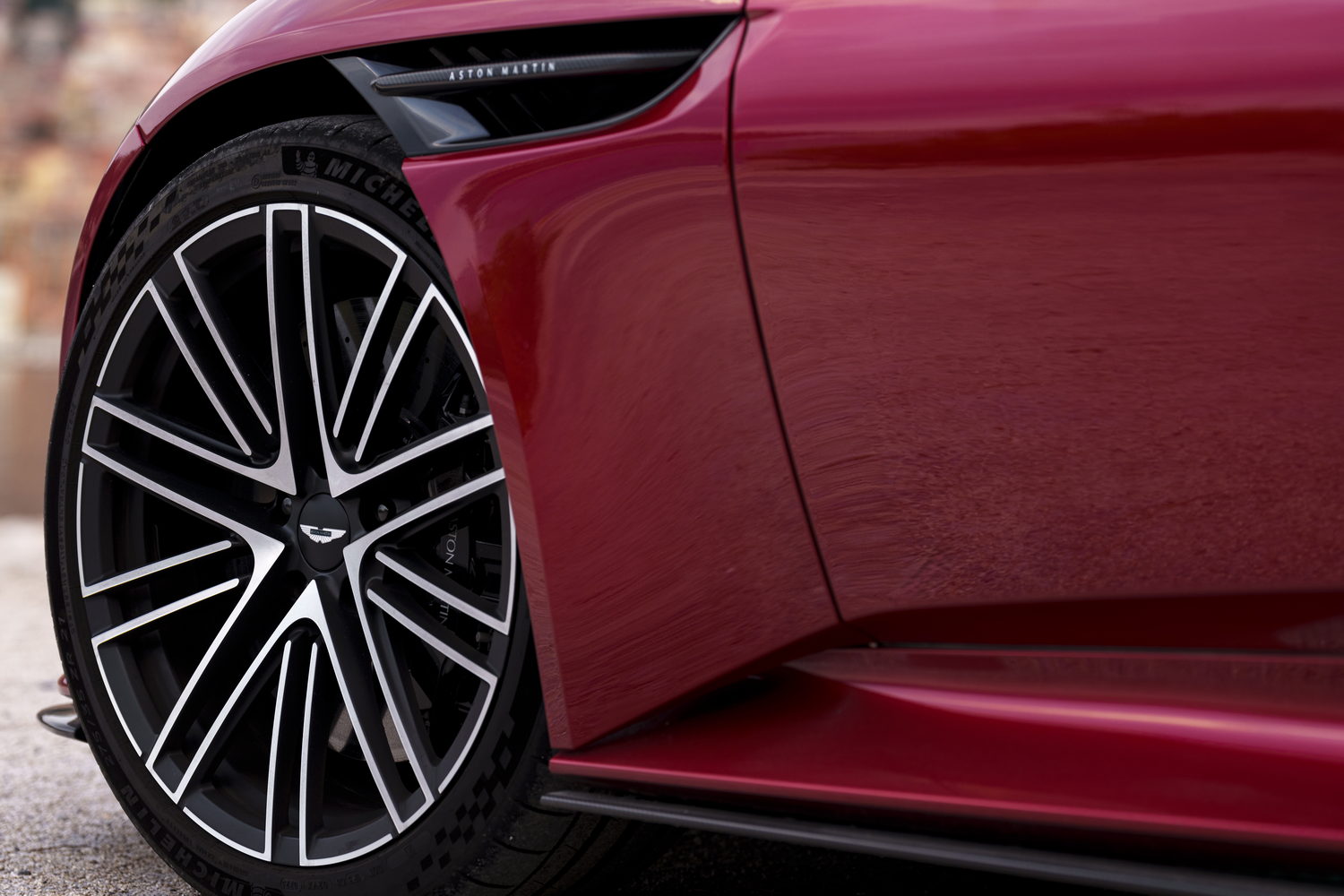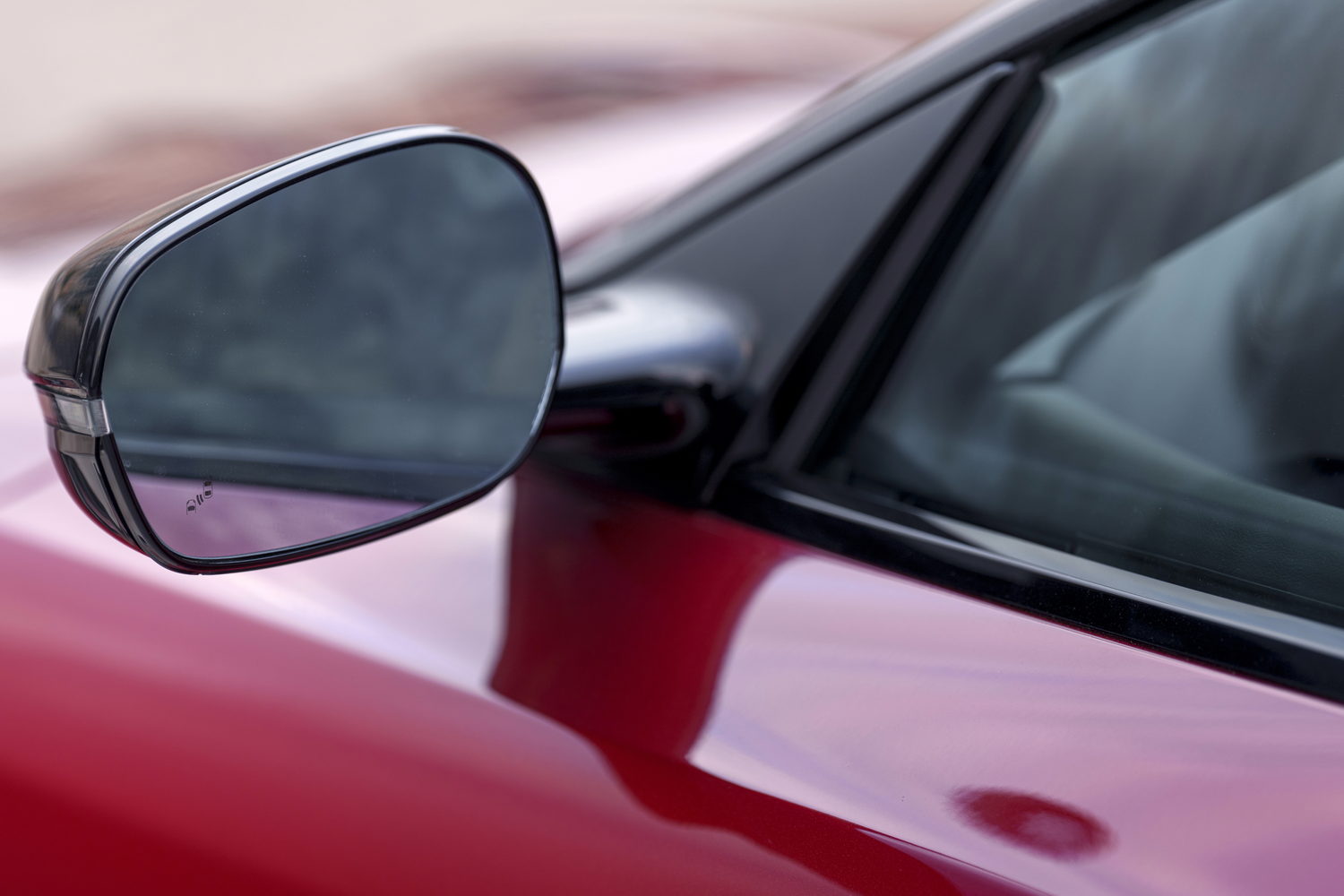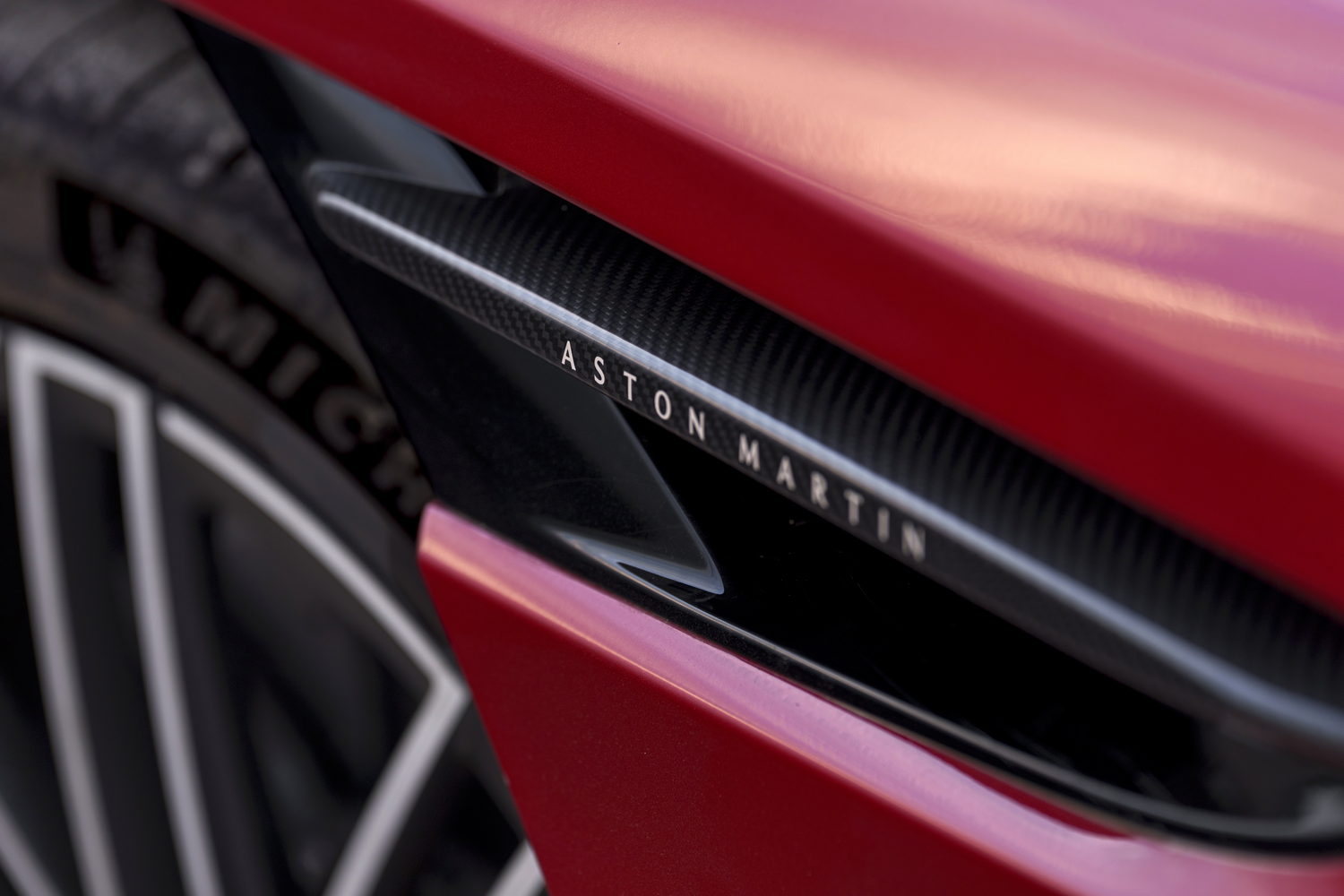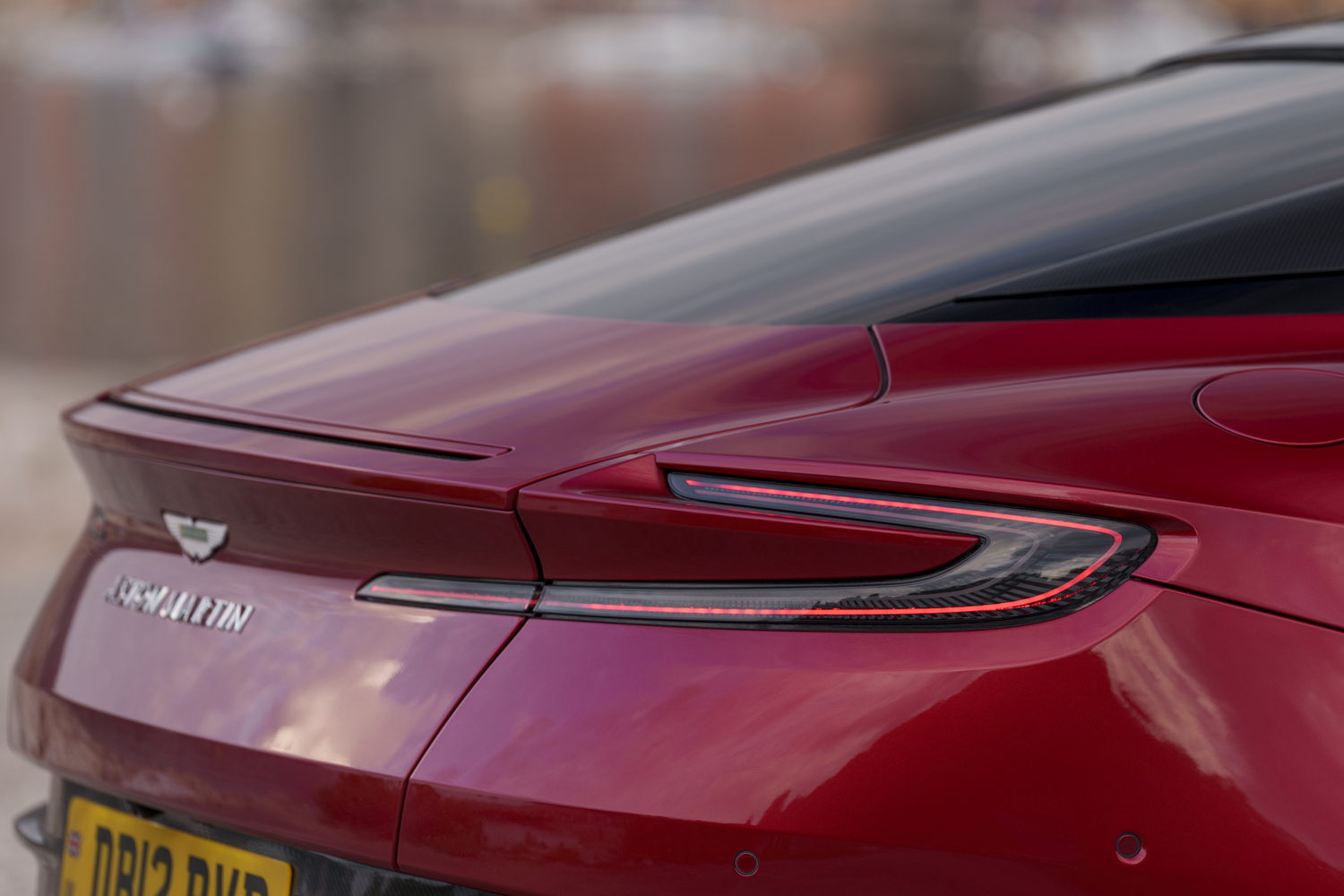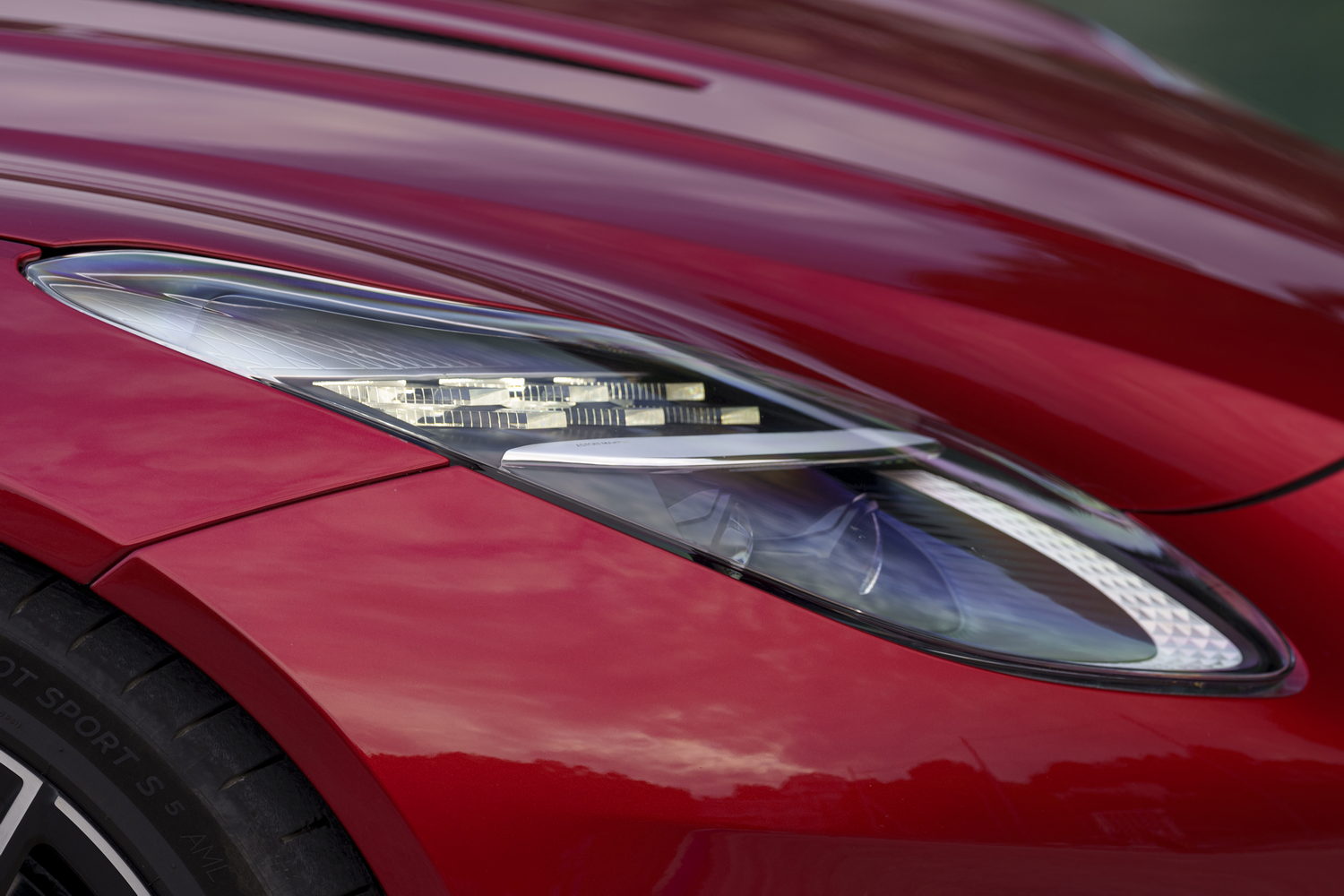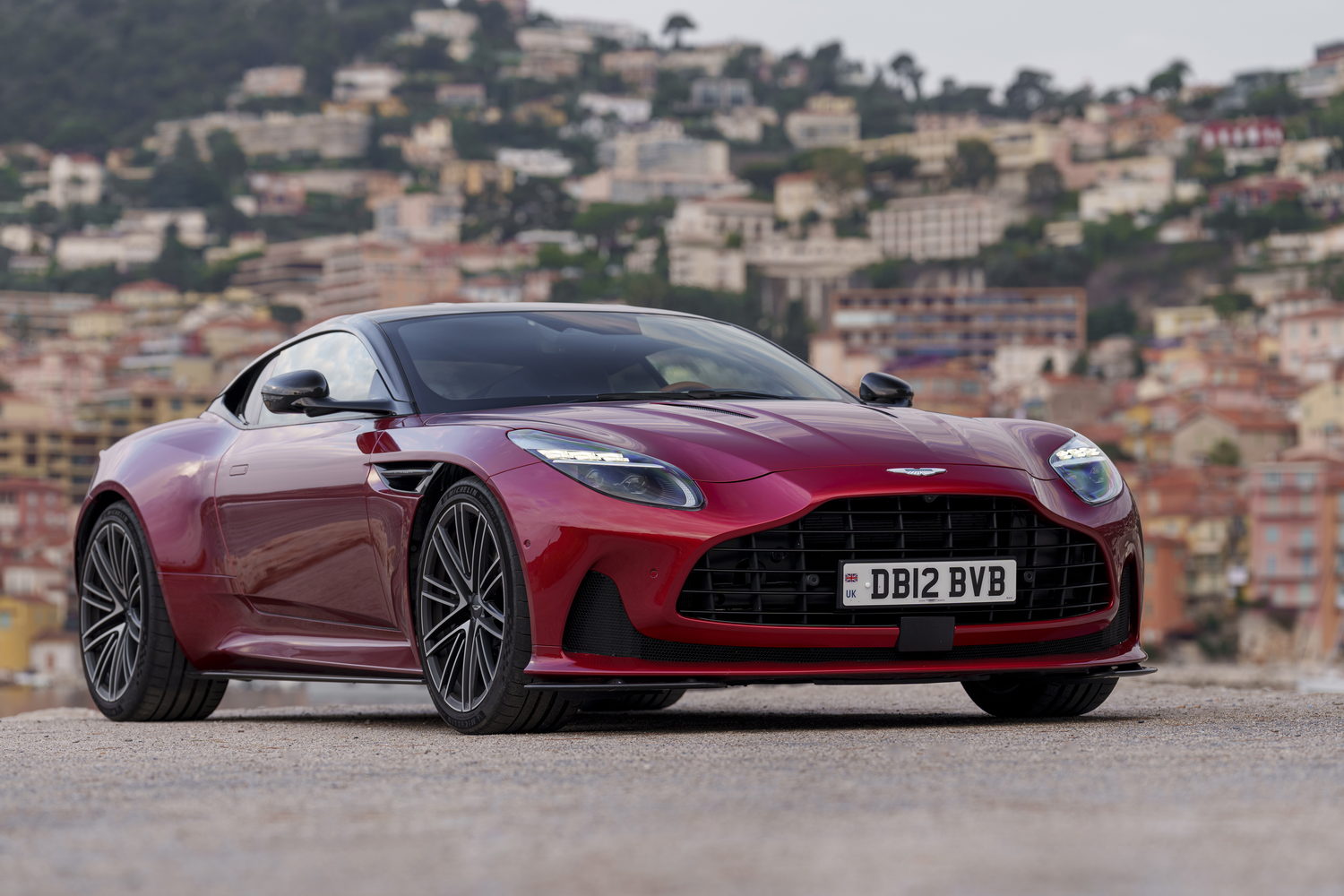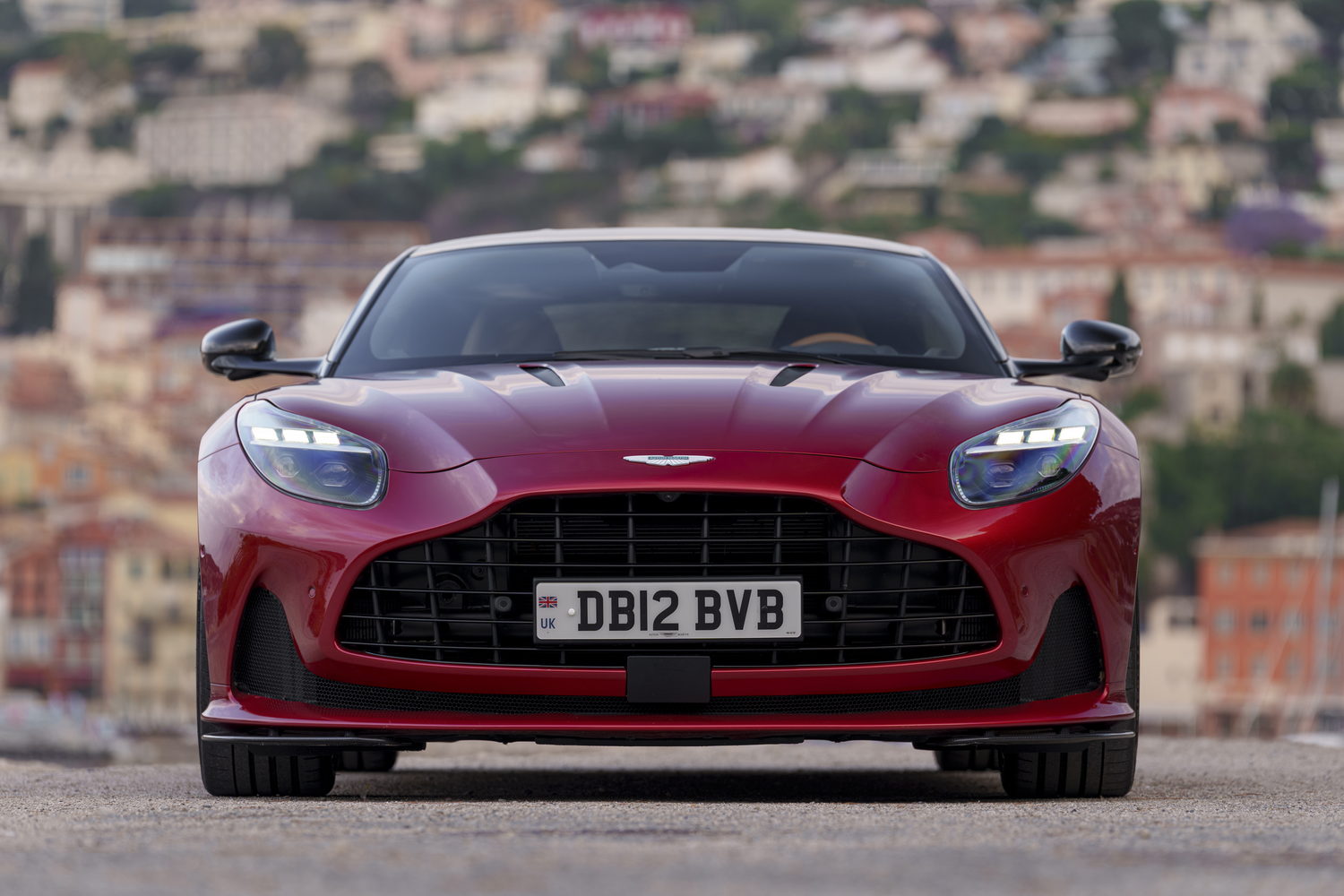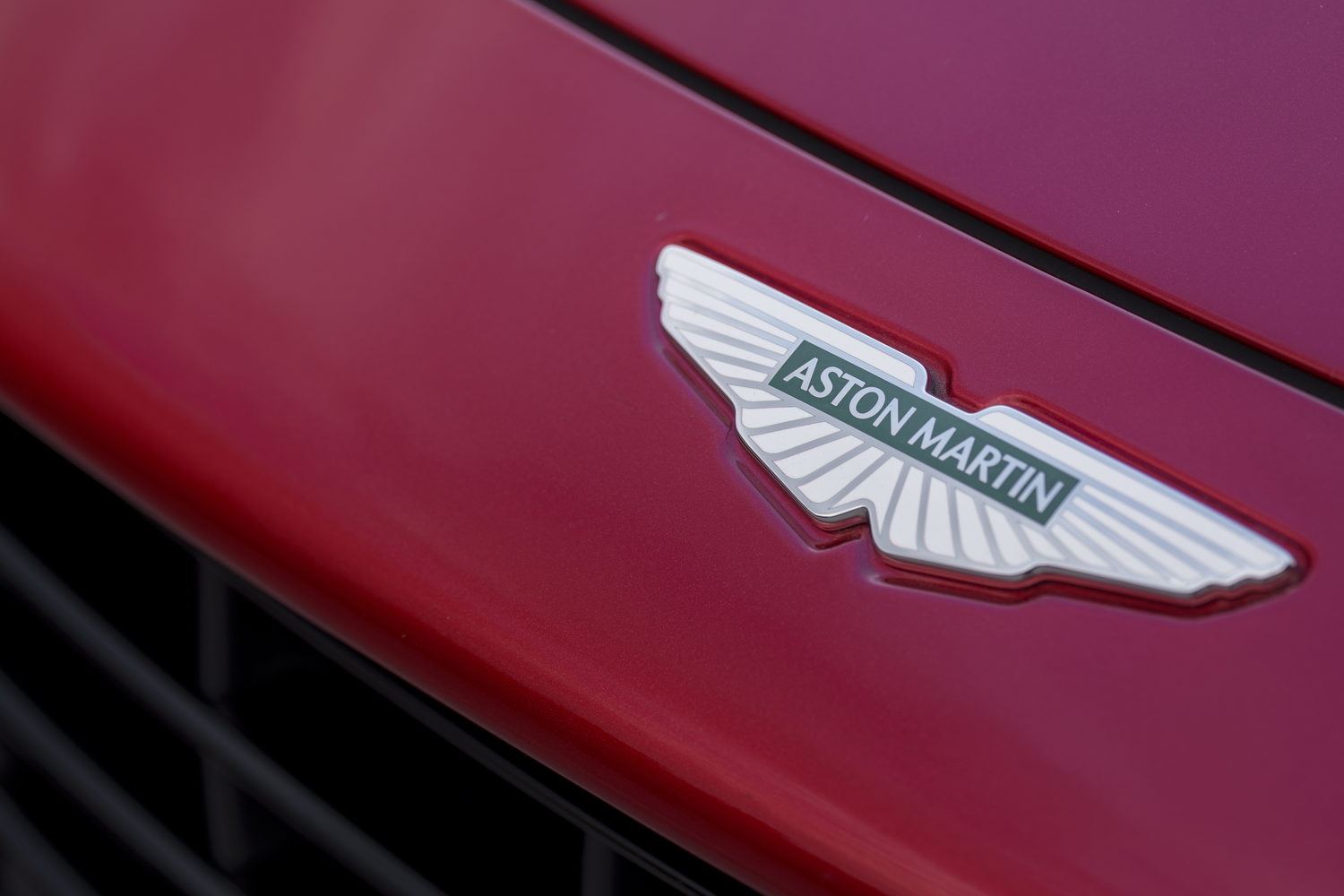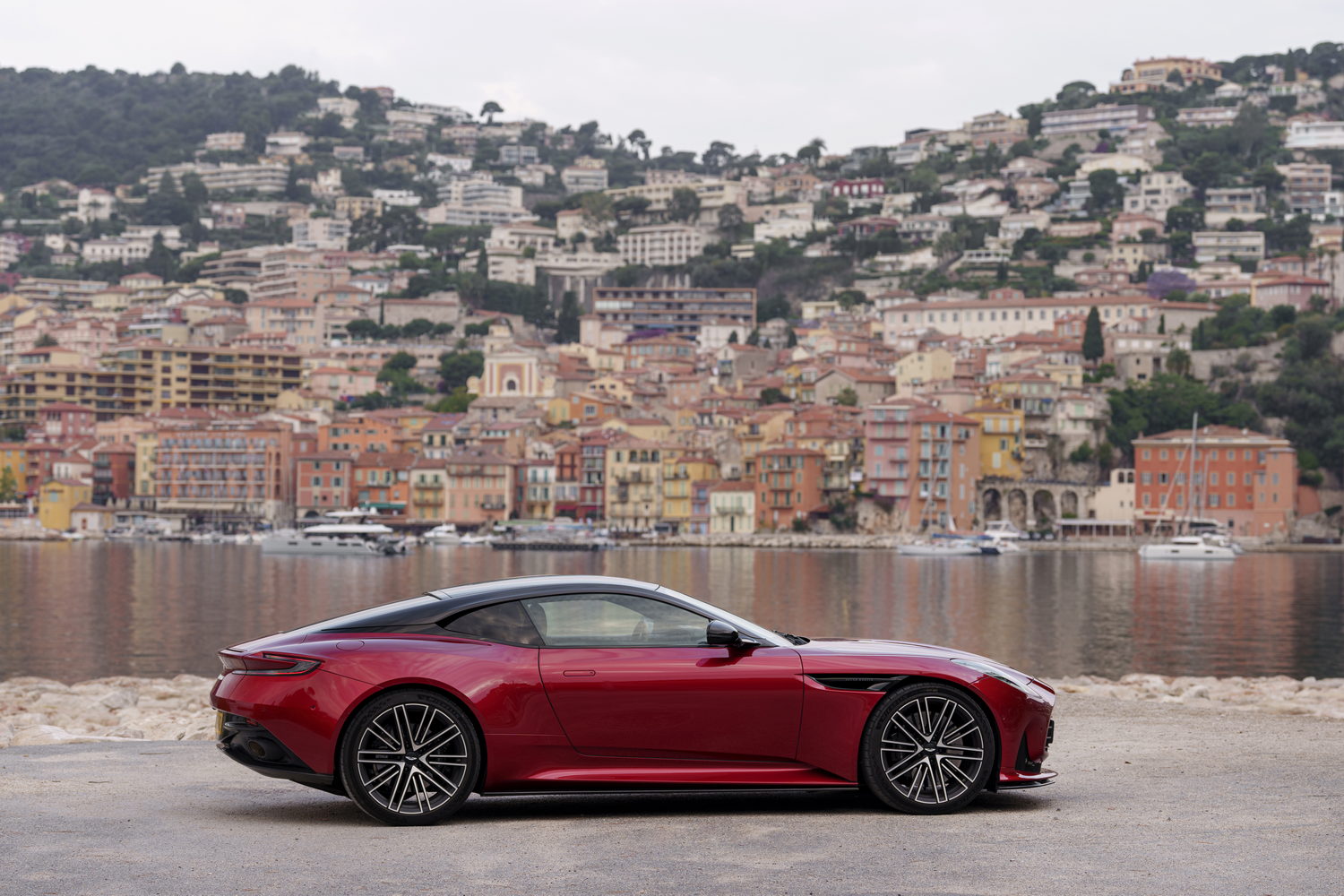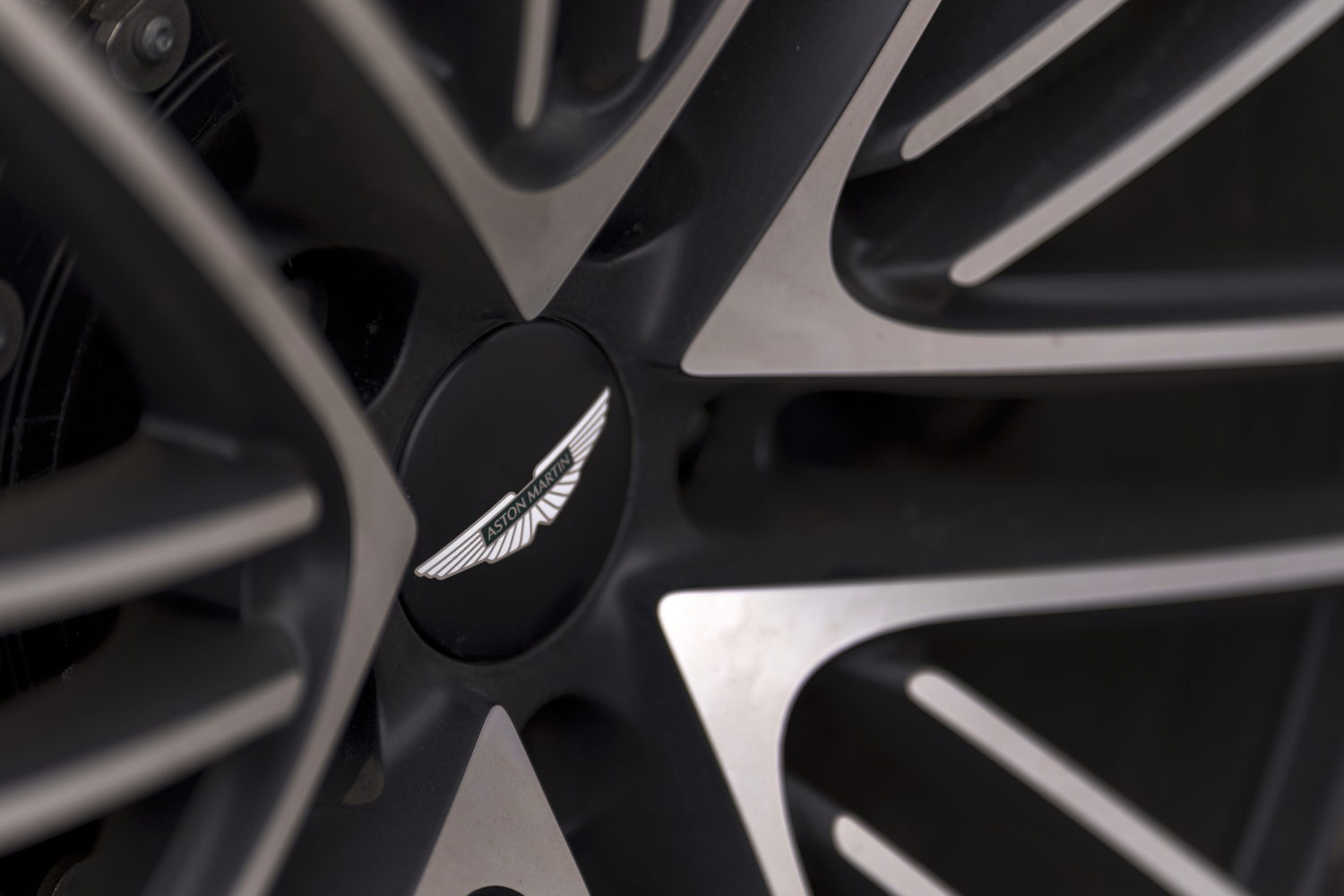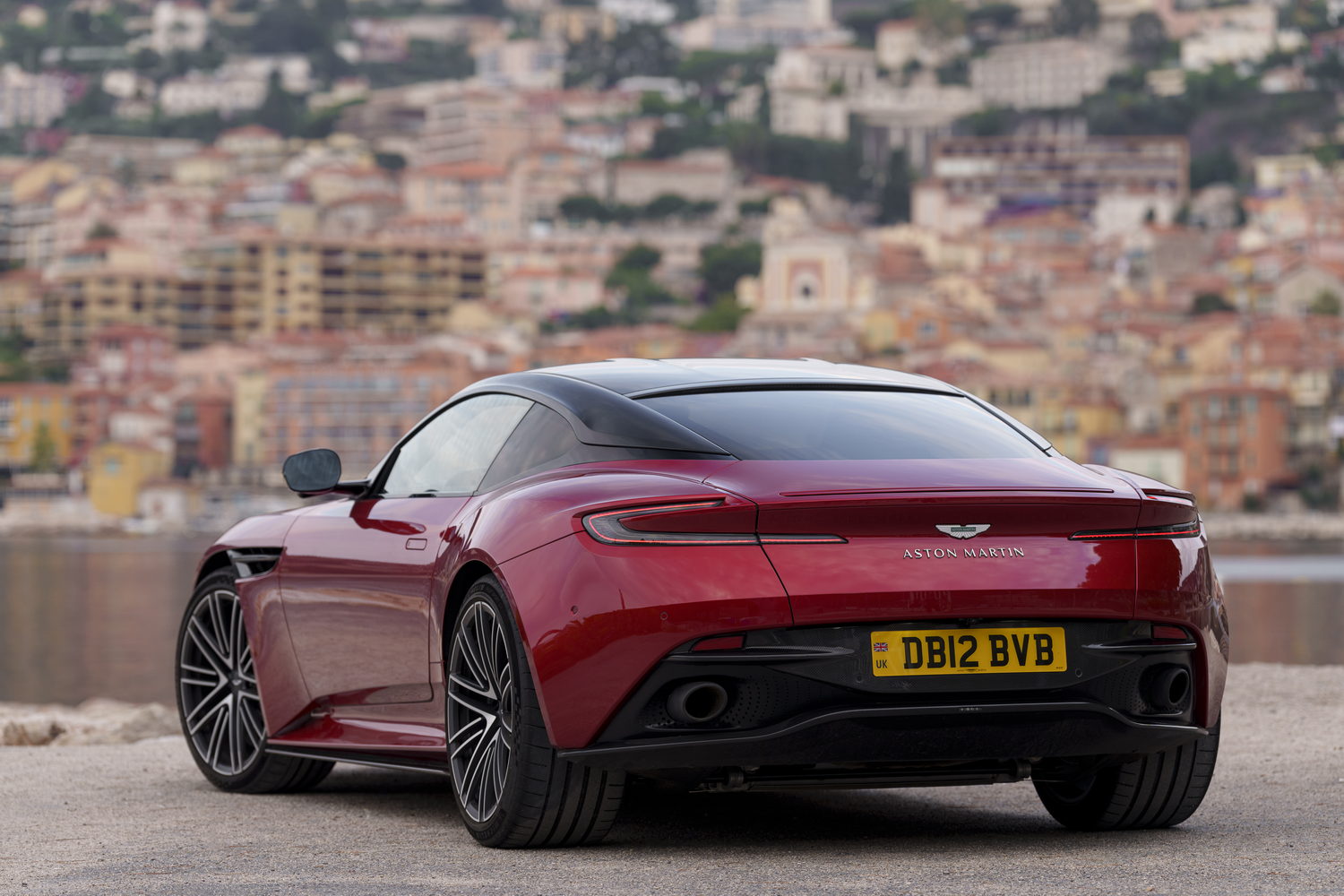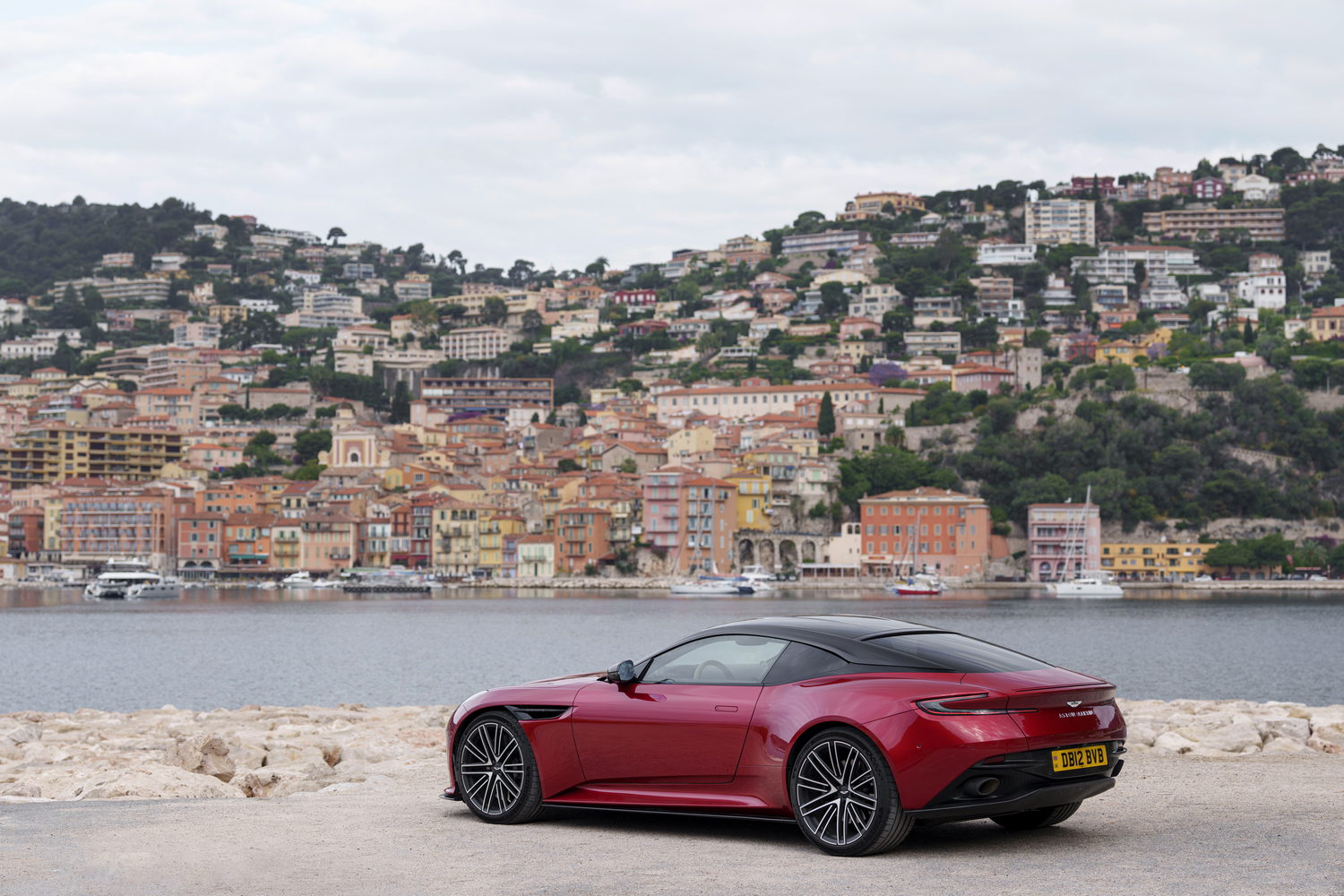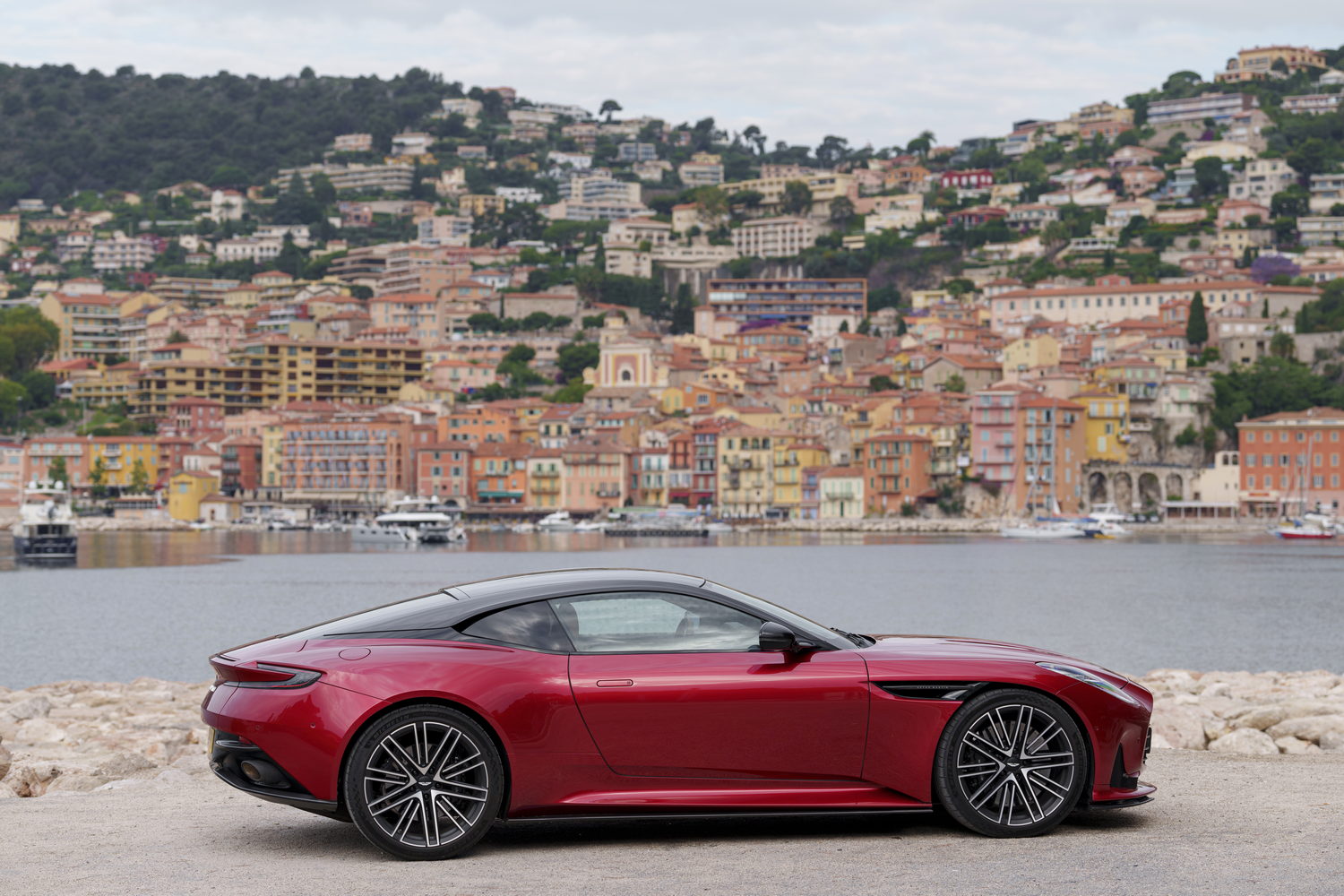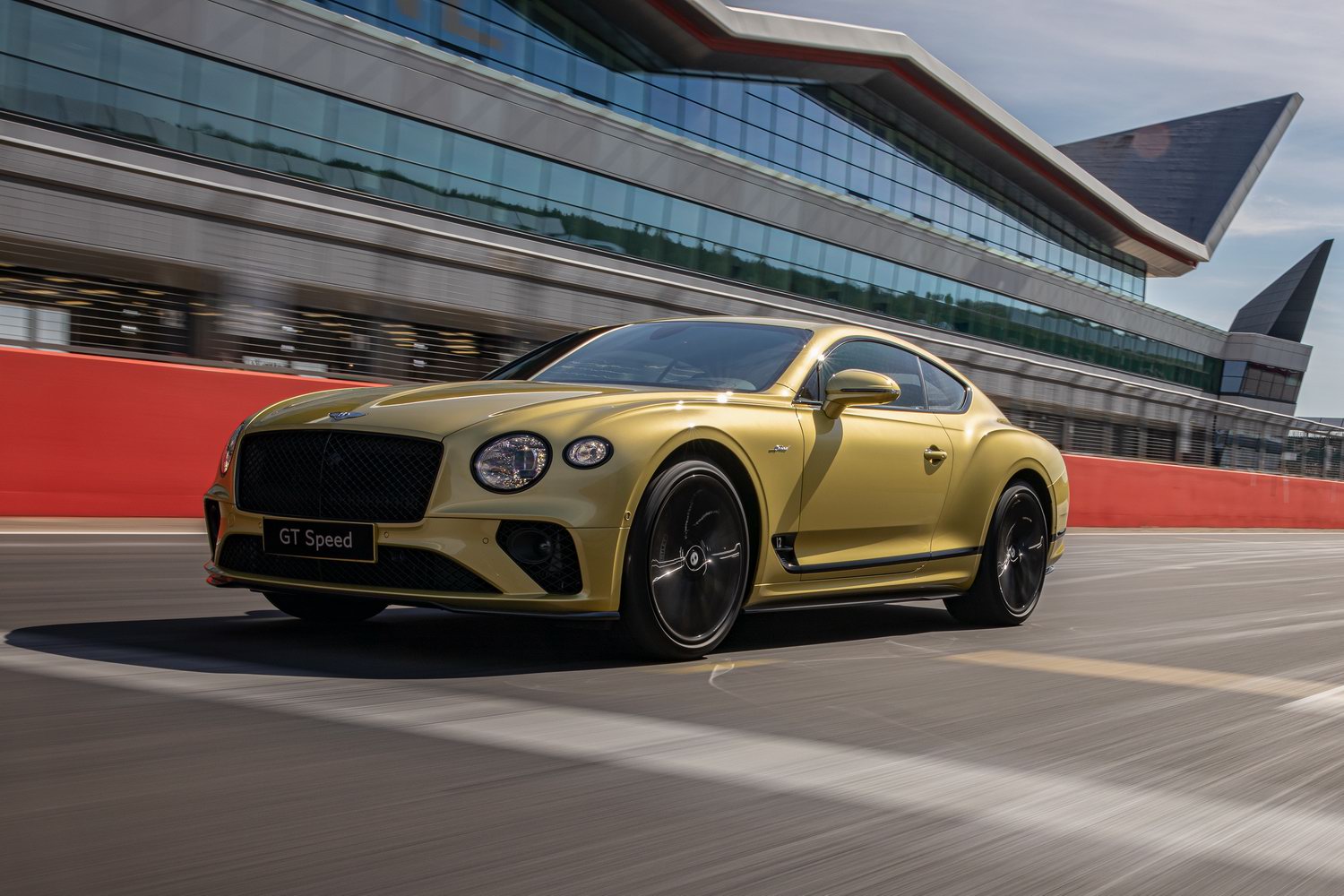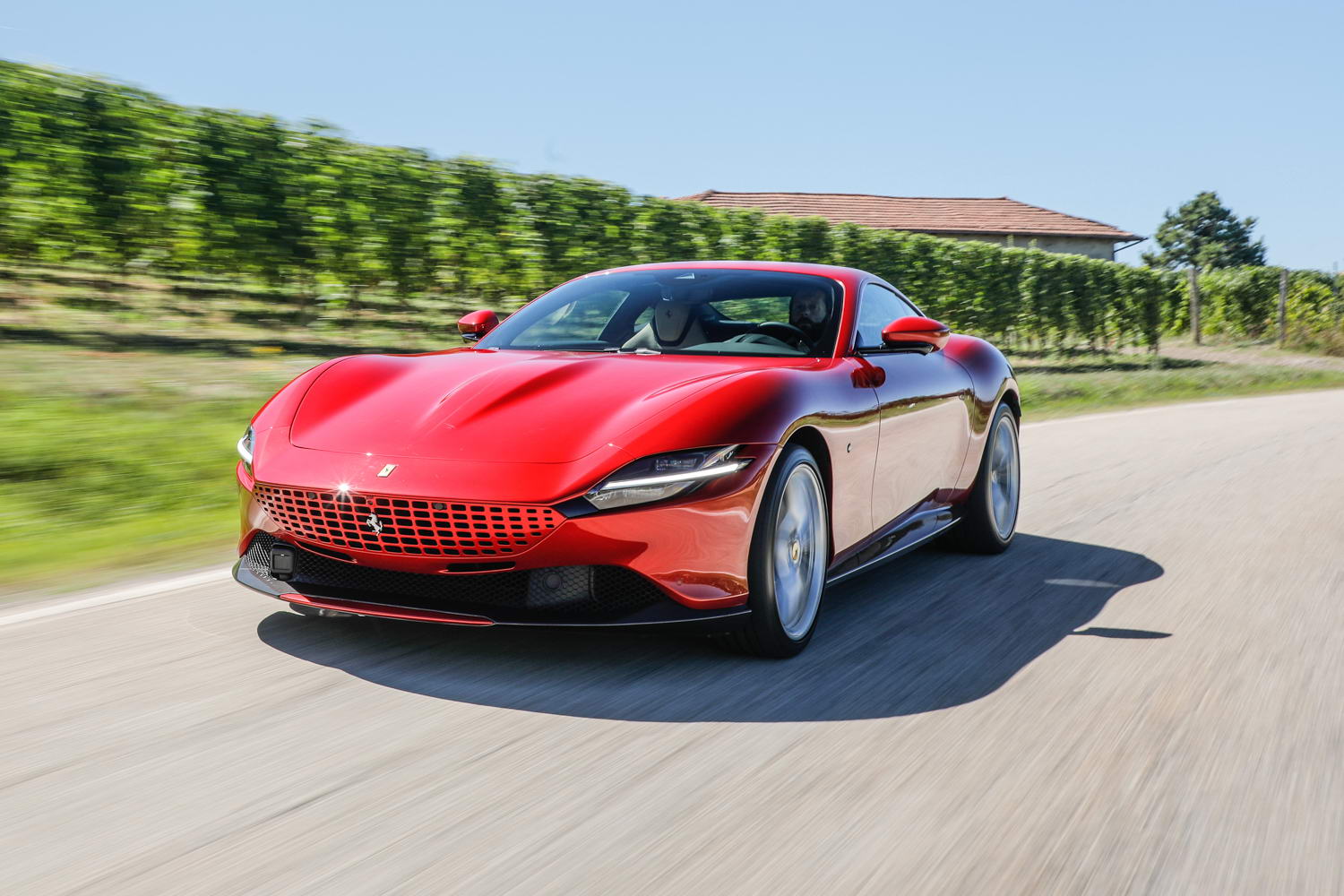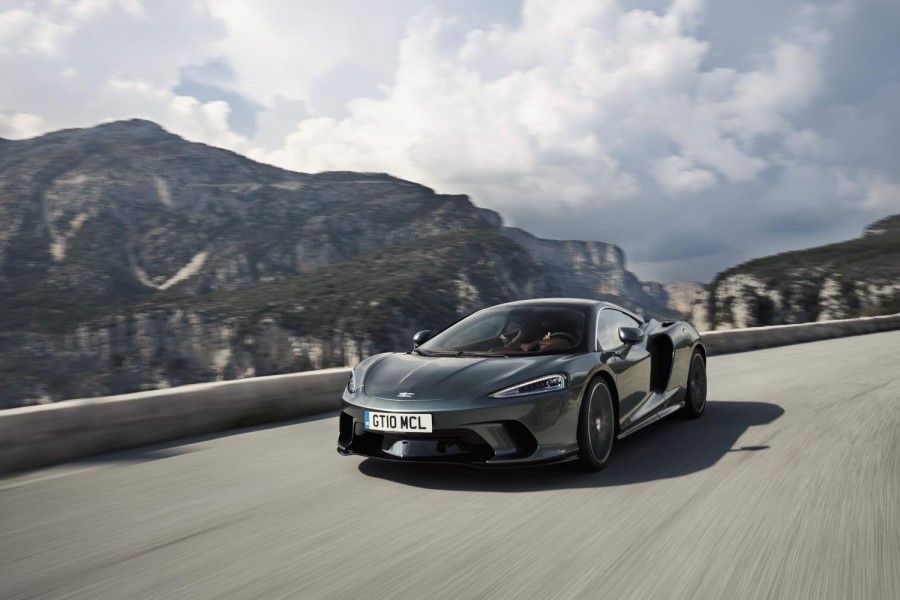Two things to get out of the way here before we get into the meat of the Aston Martin DB12 review. One: yes, the DB12 is 'just' an update of the DB11, but having spent a day driving it in all manner of conditions, it's clear that it warrants a new name. Don't be fooled by the restrained styling changes. Two: you'll have to forgive Aston Martin's enthusiasm for the new car in coining a very cheesy catchphrase for it - "Grand is not enough. This is the world's first Super Tourer". It's intended to convey the wide breadth of capability this car has. So yes, it is a GT car (i.e. Grand Tourer) designed to cover large distances in style and at speed, but the tagline suggests there's even more to the DB12, perhaps even approaching supercar capabilities.
In the metal
When Aston Martin first took the covers off the DB12, it showed an example painted a lurid shade of green and fitted with bronze-coloured wheels. It was certainly attention grabbing, as intended, but it also made the car look more different from the DB11 before it than it perhaps is. Seeing the DB12 in the metal for the first time, in a more restrained paint colour and on silver-painted wheels, it's more obviously derived from the DB11 - albeit with more presence.
The stance is more muscular, certainly, thanks to track width increases front and rear. A new set of 21-inch rims is standard and the bigger wheels - fitted with Michelin Pilot Sport S 5 tyres no less - fill out the arches more convincingly. Commendably, the bigger wheel-tyre combo is lighter than the 20-inch wheels fitted to the DB11.
It's difficult to ignore the enlarged radiator grille up front, mimicking that of the Aston Martin DBX707 and allowing more air in to cool the engine behind. Accompanying that is a more aggressively-styled front apron with an integrated splitter, while new high-tech LED lights feature a distinctive daytime running light signature. Other detail changes include the addition of the Aston Martin name to the side strakes and replacement of the door mirrors with much more slender items. Oh, and the DB12 is the first Aston to use a restyled 'wings' badge.
Arguably, the DB12 earns its new name for the cabin alone, which is completely new, modern and of appropriate quality for a car that'll be bought by the highest net-worth individuals on the planet. Things start well with the steering wheel. It's a flat-bottomed affair, though not too flat, if that makes sense. It's a touch thicker of rim than is ideal, but it makes up for that with the quality of the leather and the solidity of the metal gearchange paddles behind. There's good-quality switchgear on the wheel's spokes, too, including touch-sensitive thumbpads to operate the instrumentation and infotainment.
Behind the wheel is digital instrumentation. It's highly customisable, though it'll take an owner a while to find their way around it at first. There's lots of information on hand if requested and the digital rendering looks good.
We're even more impressed with the whole centre section of the cabin. Below the tactile air vents is a 10.25-inch touchscreen that looks smart, is packed with functionality and easy to use. There's Apple CarPlay and Android Auto connectivity included and, just as importantly, physical shortcut buttons underneath the screen.
What's more, though the climate control can be altered on the screen, there is physical switchgear provided, too, making it a cinch to change the cabin temperature or fan speed without ever taking your eyes off the road. Aston Martin hasn't skimped on the development of these controls, either, as they operate with real tactility and they feel sturdy. In fact, the big rotary controller - which adjusts the driving modes - feels deliciously overengineered and you'll use it just because.
Behind that is the drive selector, which is a small, tactile-to-use nub, surrounded by a suite of buttons that allows customisation of the driving settings. There's a pair of cupholders under a sliding cover and some storage in the shallow armrest too. The door pockets are long and not very tall, but they do hold large bottles firmly in place. Best not to focus too much on rear passenger space, though. There are shapely seats back there, but no legroom unless the front-seat occupants slide their chairs very far forward. It's a useful place for extra luggage, though the boot itself is of a useful size, relatively speaking, accommodating up to 262 litres.
Driving it
While the interior of the Aston Martin DB12 is a very obvious departure from what went before, it would be easy to glance at the technical specification of the powertrain and chassis and assume little has changed from that of the DB11. That's not the case. Under the extravagantly sculpted bonnet lies a new development of the renowned Mercedes-AMG V8. As before, it uses two turbochargers - nestled in the vee of the engine - and it's a four-litre unit. Thanks to myriad mechanical changes, and a completely new cooling system, it now makes 680hp at 6,000rpm and a massive 800Nm of torque between 2,750- and 6,000rpm. It also sounds different, certainly in the sportier driving modes, more hardcore and menacing than melodic - if undoubtedly special.
A carbon-fibre shaft brings power from the engine to the rear-mounted transmission. It's an eight-speed automatic gearbox with a torque convertor and an electronically controlled limited slip differential. While the character of the gearbox varies between driving modes, there's also a prominent "Manual" button next to the drive selector to give the driver full control of gear shifts.
The characteristics of the gearbox and the differential are centralised with all the other sub-systems, which we'll come back to in a moment, but suffice to say that electronic control of the differential means the flexibility to have a fully open or a fully locked (or indeed any ratio between) differential within milliseconds as the system deems necessary. This feeds into the requirement for a car that can feel very different depending on the driving settings chosen.
Aston Martin quotes a 0-100km/h time of 3.6 seconds and the DB12 tops out at 325km/h.
Thankfully, you don't have to drive at such insane speeds to enjoy your time behind the wheel of the car. The V8 roars into life when you press the start button, as expected, but then it settles down into a muted rumble in the background. Leave the DB12 in its default 'GT' driving mode and it's wonderfully smooth and tractable at low speeds, making dealing with slow traffic a breeze. The steering - a fixed-ratio system - is well-judged in its directness, but it never feels nervous and nor does the front of the car feel too darty as you turn into a corner. It just goes where you point it, all apiece, all exactly as you'd want. Cohesive is a good word to describe how the DB12 goes about its business. Indeed, the only challenge to overcome out in the real world is its width - that takes watching on a twisty narrow back road as much as it does in an urban environment.
And while our early kilometres in the DB12 out of town and along a stretch of motorway confirmed that it certainly can play the GT role with aplomb, we were itching to try out the other side of its character, so we pointed the shapely nose at the mountains and reached for the driving mode selector in the centre console.
Thanks to a significant upgrade to Aston's electronic architecture, the DB12 features all the latest driver assistance technology, but it's thankfully not intrusive. In fact, to allow the GT mode - and those above it - be more sporting, Aston Martin developed a 'Wet' mode for the first time, allowing owners to dial everything back if the conditions demand it. Other than during a short rain shower that didn't faze the car, we didn't feel the need to use that option.
Sport mode ramps up the car's aggression, but not to an extreme level. It means more response in all the right places and yet it doesn't come with a hard edge that makes it unsuitable for everyday use. Those that love to drive will probably choose this as their default setting. It's possible to customise the various sub-system settings to your liking under the Individual option, too, though as tweaking the levels of each is only a button press away, regardless of the chosen mode, that seems a little superfluous.
There's nothing superfluous about the Sport Plus mode. This helps the DB12 really come alive. It features a new generation of adaptive dampers that Aston is particularly proud of, bamboozling us with graphs and data to hammer home its point that they allow a very wide range of operation. And so it seems. Though the body control is exemplary, the car never seems to become a hard-riding, one-way ticket to your local chiropractor, either, and special mention should be given to the brakes, which were faultless in our test drive, with a wonderful confidence-inspiring firmness to the pedal itself and well-judged modulation.
In Sport Plus mode, the added suspension stiffness amplifies the feedback from the tyres on the road up through the chassis and steering to your hands in a notably textured manner, so you always know what the surface is like and how much grip is on hand. Helping make all that possible is a much stiffer body structure to hang the suspension off.
Also working away in the background more or less undetected is a new six-axis accelerometer feeding data into a central control computer. This uses all kinds of cleverness to predict the level of grip available and tweak the chassis systems as required. The end result is a more rewarding drive, even when the car is pushed to the limit, as the traction control and stability control don't obviously step in after they're needed. The best thing we can say about all this is that you can just get on with driving the DB12 as you see fit and it allows you to maximise the car's considerable capability.
What you get for your money
If an Irish buyer wants a new Aston Martin DB12, they need to head north to the Charles Hurst dealership in Belfast. It's estimated that the car would start at about €450,000 imported with VRT etc. paid. It's a lot of money, but in line with the alternatives.
Summary
We forgive Aston Martin its cheesy catchphrase, as the DB12 is a vastly more accomplished car than the DB11 before it. Without losing sight of its continent-crossing GT ability, the DB12, with a press of a button, takes on the role of an engaging and competent sports car. Buyers not so focused on the on-the-limit driving experience will no doubt approve of the massive upgrade to the car's interior and technology, too. As the first car in a new generation of Aston Martins, the DB12 is an enticing prospect.

